2013-01-11 International Parity at Work Day 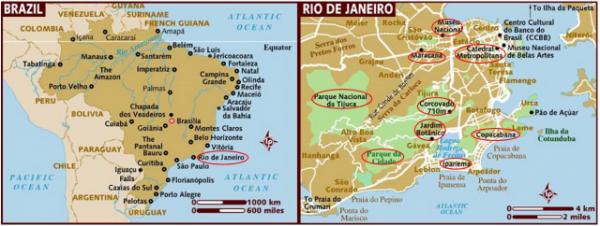
【Aiden in English】
〖Prelude〗
There was no place on Earth like Rio de Janeiro, as the natives proudly said. Founded in the early 16th Century, Rio was the capital of the Federal Republic until 1960. The City remained the nation's spiritual center, amalgamating Latin and African heritage. As Brazil's Maravilhosa, the "Marvelous City" throbbed with mountains, beaches, colonial cultures, museums, street art, and locals, allowing us to capture the wild beauty and heady sensuality. Our month-long travel and vacation in South America would soon end right here. As lovely as the morning in Rio could be, my spirits were dampened because an early call interrupted breakfast, which included a smoothie, juice, cookies, and corn chips. When we raced downstairs, our private tour guide, Madson, waited patiently for us in our hotel lobby. Unlike many other places in South America, we did not make any changes to challenge ourselves in exploring this part of the universe on our own. Beyond the safety issue, communication proved to be our biggest hurdle. We could not help but wonder how Brazil successfully hosted the 2016 Rio Olympic Games when most people did not know how to speak English. Unless all folks from the rest of the world learned Portuguese, there was no guarantee of a common ground. Madson was a young native who lived in an apartment just off Copacabana Beach and spoke English fluently. He had a business that provided private city tour services and promoted his travel book about Rio. Based on his reputation and expertise, Mom hired him directly online and paid him hourly in US dollars. 〖Metropolitan Cathedral of Rio de Janeiro〗 Madson drove us to a large, black, ice cream cone-shaped building with windows along the side. It was a modern church dedicated to Saint Sebastian, the Metropolitan Cathedral of Rio de Janeiro. Outside, it resembled a peculiar pyramid, but inside, it was something fit for the Olympics! There were rows and rows of seats surrounding Jesus in the center. Four rectilinear windows radiated light through the colorful stained glass. On each exit stood a statue in robes and holding flowers. Today was St. Sebastian's. The church celebrated the saint of Rio, who the Romans killed in the 3rd Century. Per Mom's request, a squad of policemen quickly lined up with me. Soon, we were fortunate enough to encounter an Archbishop who attended these annual events on-site. Mom talked to him and a bishop about the holy festivity. In no time, she asked for permission and took some snapshots of me with them. The Archbishop asked if Mom was a reporter who came from China. I did not want to be on the front page of the newspaper. 〖Favela〗 Mom had long planned to visit a well-known slum in Rio. Notably, she would like me to realize that as many as two-thirds of children in the population still struggle in deep distress to date. That was why we hung out in Santa Marta Favela. Santa Marta Favela was right above downtown Rio, opposite the city cemetery. It overlooked Leblon, an exotic high-class neighborhood facing Guanabara Bay. Here, it seemed like a trash dump. I couldn't imagine how people lived there. All houses were built on the steepest slope. So was a miniature soccer field that looked much smaller than a tennis court. More than 8,000 residents occupied the tiny side of the hill. Therefore, it was heavily polluted with trash and dog poops. The government placed armed police officers all over this area because Rio would host the 2016 Olympic Games. So, some people moved away because the police kept watching them, day and night. I thought that sometimes the police were too noisy and always ended up in your business. No one would want the police to come in while you were in the shower. However, local people felt safer than ever before. The police were doing a good job of keeping the crimes down. Michael Jackson used Santa Marta as the primary setting for his controversial song "They Don't Care About Us." We took a tram up and down from his statue to experience more about the Favela's surroundings. I couldn't imagine how children climbed 700 steps to school daily. Were they highly athletic, or was I too lazy? 〖Corcovado〗 Located in downtown Rio, Tijuca National Park encompasses the most significant urban forest in the world. Abundant jackfruit trees competed for space with native tree species. However, what brought us here was the summit of Corcovado (Hunchback), which offered stunning views. The mountain stood 2,300 ft/701 m above sea level and became Rio's highest peak. To seize it at the right time in midsummer, we were asked to arrive before 8:00 am. Or the clouds would cover it completely. We took a minivan to an elevator that lifted us to the top. The 360-degree panorama put Rio at our feet. The iconic statue of Christ the Redeemer dazed us with its 125-foot/38-meter-tall concrete and soapstone figure. The sculpture was so immense that its head was immersed in the clouds. A strong blast of wind blew the clouds away and almost carried me. 〖Selaron Staircase〗 Chilean-born artist Jorge Selaron created the famous Selaron staircase. Staircase. He used to travel internationally to paint pictures for friends and fans. Thirty years ago, he settled in Rio and started decorating 250 steps with over 2,000 colorful tiles he collected worldwide. Selaron was not only addicted to portraying a pregnant African woman but also loved to depict him with a bulging belly like a cartoon figure. In general, tourists would hand him the painted tile or tiles, and he would place them in his magnificent staircase. There were a few tiles that originated from Philadelphia, USA. Some terra-cotta and Cloisonné Chinese tiles dangled from the Wall of China. Probably, Mom and I were the only ones who were incapable of reading and understanding the inscribed words. There was a block of painted tiles patriotically supporting the Brazilian soccer team, which would compete in the 2014 FIFA World Cup and the Rio 2016 Olympic Games hosted in this country. Jorge died, possibly by suicide, only one day before we visited. Mom seemed deeply depressed about his death. 〖Santa Teresa Street Art〗 Street art in Rio often incorporates many natural elements into its design. Santa Teresa became a favorite spot for artists and tourists. Its winding, narrow, and steep streets, flanked with gorgeous colonial mansions, resembled where Mom grew up in her childhood back in China. As I cruised in the SUV, she set out on foot to stride across block by block and revived her memories of the past. 〖Confeitaria Colombo Cafe House〗 As much as I wanted to stay on track, I was hungry like a stray dog. We stopped at a grandiose Confeitaria Colombo in French Art Nouveau, which we had never dined in before. There was a wide selection to choose from on the menu. So, Madson tried to make our lives easy by giving us some recommendations. But I was keen on others. Something spicy would whet my appetite. However, everything looked tempting. My favorite was the chicken turnover. As I took my first bite, I felt a warm, delicious sensation inside. The bread tasted crispy and crunchy. After I devoured my share, we were already on the road. 〖Ipanema & Copacabana White Sand Beaches〗 Last night, we googled on YouTube and listened to the song "The Girl from Ipanema." As we jogged on the most sophisticated beach, catching up with the never-ending rhythm of life lived with passion was not difficult for us. Adjacent to its curved coastline, the bustling Copacabana is renowned for its stunning Art Deco promenade and breathtaking cityscape views. When a cool breeze blended in rainy summer, no one like us dared to jump into the frigid Atlantic Ocean and frolic in the waves. We hopped on and off the vehicle and stopped by the sand sculptures. Meanwhile, we have local hedonistic attitudes to spare. Right off the beach, the most famous and luxurious Copacabana Palace Hotel takes pride in its cultural heritage. Mom visited a flea market where various fresh fruits left our mouths salivating. 〖Sugarloaf Mountain〗 We were supposed to take a ski lift to the 1,300 ft (396 m) Sugarloaf Mountain, but the clouds sat on top of it. If a cloud were to leave, another would replace it immediately, so we decided to skip it this time. I wish I could see the sun in Rio when we might come back for the Olympics in August 2016. At least it would be winter in the dry season by then. 〖Cityscape〗 As Tango to Buenos Aires, Samba symbolized the "Feast of Flesh" to Rio. Its Saturnalian revel invited us to experience the sights and sounds of such a marvelous city. We traveled through downtown Rio and glanced around its mix of dazzling high-rise buildings and colonial architecture. The Carioca Aqueduct was an 18th-century colonial structure that brought fresh water from the Carioca River to the City. Some landmark buildings stood like ruins and were torn down piece by piece over time. Tiradentes Palace on Rio Branco Avenue came into sight. It used to house the Brazilian Congress before moving to Brasilia in 1960. Now, the Rio Legislative Assembly occupies this eclectic-style palace. The historic Candelaria Church (1822) combined a Baroque façade with Neoclassical and Neo-Renaissance interior elements. I sat inside and listened to the praises of holy love. Mom loved to stroll the archway, Arco de Teles, to the quaint two-story colonial townhouses and picturesque narrow cobblestone street, Travessa do Comércio. Restaurants and drinking spots opened directly onto the streets, transforming us into a different time in Rio. The monument to the dead of World War II was made of concrete, like an artwork in Brasilia, the capital of Brazil. The National Museum of Fine Art exhibited its permanent collection of over 10,000 artworks, including paintings, illustrations, and sculptures by eminent Brazilian artists. Like many other museums in Rio, it was free of charge. If we had stayed longer, we would have loved to indulge in Brazilian culture. In 1987, Rio de Janeiro, including Carioca Landscapes between the Mountain & the Sea, was inscribed as a UNESCO World Heritage Site. 【红霞译】
〖序言〗 世界上没有任何一个地方像里约热内卢“一月河”,当地人总是这么自豪地说。 建于16世纪初叶,里约在1960年以前一直作为巴西“灰烬之木”联邦共和国的首都,如今仍是全国文化宗教中心,饱含拉美和非洲两种文化渊源。 享有巴西“奇妙之城”盛誉的里约毫无保留地将其山川湖泊、海滨沙滩、殖民文化、地域传统、街景艺术、风土人情展现在我们面前,使我们在欣赏自然风光的同时,充分领悟疯狂性感的民族情操,我们长达一个月之久的旅游度假到此即将宣告结束。
今天早起老天总算赏脸,没有下雨。不过我的激情很快被传来的电话声打断,撇下好端端的奶昔、果汁、点心、玉米片一桌早餐,撒腿往楼下奔跑,导游麦迪森“神赐”准时在酒店大厅等候我们。 不像南美其它地方,我们从一开始就没打算自己到里约游山玩水,排除安全第一不说,语言交流搅得我们信心全无。我们禁不住要问,如果市民不会讲英文,三年后里约将如何主办2016年奥林匹克运动会?除非全世界其他国家的人民积极投入学习葡萄牙语的热潮之中,否则根本没有办法达到共识。 麦迪森是本地土生土长的年轻人,家住湖景海滨,熟谙英语。他独挑旅游生意,提供私人导游业务,并推销自己写的有关里约旅游书籍。根据其专长及以往游客对他的网上评论,妈妈决定雇用他作为我们私家导游,按小时付美元给他。 〖里约大都会教堂〗 麦迪森带我们首先来到一个大而黑、宛如倒立冰激凌蛋卷的现代式教堂──里约大都会教堂,周边设有窗户。该教堂为纪念敬畏圣徒而建,尽管外表看上去像一个奇特的金字塔,但内部能做奥林匹克运动场!一排排座位围向位于中央的耶稣基督,光线从四个直线式的窗口幅射进来,映照得彩色玻璃五颜六色,每一个出口都有一具雕像,身着长袍,手持鲜花。 今天恰逢圣塞巴斯蒂安“尊贵”日,我们正赶上教堂庆祝这位里约守护神。据书上记载,圣塞巴斯蒂安是在公元三世纪基督教迫害时期被罗马皇帝杀害的。按照妈妈提议,一队护卫警察跟我很快排成方阵,个个笑容可掬,最振奋人心的,我们与前来参加活动的枢机大主教不期而会,妈妈来不及多想,一个箭步冲上去与他及身旁的主教攀谈圣日奇遇,在赢得同意之后,妈妈眼疾手快,迅速抓拍难忘时刻。枢机大主教问妈妈是否作为记者特意从中国远道而来?坦率地说,我可不想出现在报纸首页。 〖贫民窟〗 妈妈来前就有打算,要带我到里约一处著名的贫民窟参观,她想让我亲眼目睹何为世界上尚有三分之二的少年儿童仍然生活在水深火热之中,这也是我们为什么现身圣玛尔塔“女士”贫民窟的原因。 圣玛尔塔贫民窟地处市腹之上,与里约大墓地遥遥相望,鸟瞰瓜纳巴拉“大海的怀抱”湾边的莱布隆“金发碧眼者”高档住宅楼。 圣玛尔塔贫民窟垃圾成灾,我很难想象人们如何在这种环境里生活,所有的民房都建造在陡峭的山坡上,包括一个比网球场地小出不少的足球场,八千人盘踞巴掌大的地盘,因此人为造成的污染和野狗排泄的屎便充斥大街小巷。 自从里约获取奥运会申办权,政府派警察进驻圣玛尔塔贫民窟,不少贩卖毒品做贼心虚者不得不离开此地,另辟蹊径。我过去一向认为,警察有时好打听事,常常干预别人,谁愿在洗澡的时候看到警察破门而入呢?不过,当地人并未抱怨警察,看来警察尽职尽责,正因如此才使得犯罪率明显下降。 迈克尔·杰克逊“神似·神慈之子”主唱的一首极有争议的电影歌曲《他们不在乎我们》便以圣玛尔塔贫民窟为背景录制而成,他的铜像及壁画成为当地有名的历史地标。我们从这里乘坐电车上下穿梭,试图从不同角度审视贫民窟特殊实体,我甚至无法想象,适龄少儿如何面对700级台阶,每天爬上爬下上学谈何容易!难道他们具有运动天赋,还是我过于懒惰? 〖科尔科瓦多“驼背”山〗 座落在里约市区的蒂茹卡“沼泽地”国家公园是世界上森林覆盖面积最大的城市国家公园,公园内过于丰茂的波罗蜜树给当地生态平衡带来威胁,而最吸引我们的则是海拔2,300英尺/701米高的科尔科瓦多山,登高远望大有“会当凌绝顶,一览众山小”之势。仲夏观看科尔科瓦多山有窍门,一定要赶在早上八点之前,不然云雾从海岸线腾空而起缭绕山巅,很难叫人识别“庐山真面目”。 我们先搭公园提供的面包车来到山脚,然后再改乘电梯直达山巅,360度全方位将整个里约尽收眼底。用石灰和滑石混合制作的耶稣雕像高达125英尺/38米,堪称里约象征,由于雕像魁伟,因此经常深居云雾之中,山顶风力很大,恨不能把我一起卷走。 〖塞拉隆阶梯〗 著名的艺术阶梯出自名叫乔治·塞拉隆“农夫·鞍子”巴西籍智利人之手,年轻时喜好周游列国,为友人及粉丝作画;30年前终于定居里约,开始为250级台阶装点2,000多块源于世界各地彩画瓷砖。塞拉隆不仅热衷绘制一位怀有身孕的非洲女子,而且还极度渲染自己怀胎英姿,极富动漫色彩。 通常游客把绘有各种图案的彩色瓷砖交给塞拉隆,由他亲自装贴到阶梯上,其中少数作品来自美国费城,一些赤褐色和景泰蓝样的中国瓷砖归类到“中国墙面”,大概只有妈妈和我可以读懂上面的字迹。有一组爱国瓷砖大张旗鼓地宣扬支持巴西足球队,该队将要在本土分别争夺2014世界足联的世界杯足球赛和2016年国际奥林匹克运动会。 〖圣特蕾莎“收获”街区艺术〗 街区艺术因其设计融入了自然风格而在里约非常流行,圣特蕾莎街区艺术就是其中典型代表,同时为艺术家和观光客提供了交流空间。圣特蕾莎街区道路素以蜿蜒、狭窄、坡陡出名,两旁的殖民建筑让妈妈触景生情,使她想起童年时代自己在国内生活的地方。我坐在车里,妈妈则情愿徒步漫步,一条街一个马路走下来,试图追忆旧日的足迹。 〖科伦坡“鸽子”糕点店〗 尽管我想坚持到底,但实在拗不过嗷嗷待哺的肠胃,为此我们特意停在一家豪华气派前所未见的具有法式新艺术建筑风格的高级餐馆──科伦坡糕点店,食谱五花八门,看后令人眼花缭乱。导游建议我们几样经典小吃,而我偏偏喜欢其它花样,略带小辣味道的食物尤其让我垂涎欲滴,不过说句实话,这里每种食品都非常诱人。我挑选的鸡肉馅饼,刚嚼一下暖和和香喷喷的味道就脱口而出,面包皮脆脆嘎嘎,烧烤得外焦里嫩,我狼吞虎咽,干净利索消灭掉残渣碎片,这才发现我们已经上路。 〖伊帕内玛“臭水”和科帕卡巴纳“湖景”白沙滩〗
昨晚我们特意上网查询红遍全球的歌曲“来自伊帕内玛的女郎”,今天立刻步其后尘来到里约最标致、令人爱得死去活来的海滨。的确,只要身临其境,我们不难感受饱含激情永无止息的浪漫节奏。 随海岸扭动的线条,我们进驻另一千人迷万人恋的科帕卡巴纳沙滩,行走在充满艺术情调的海滨大道上,里约风光璀灿夺目。仲夏里,海风阵阵且阴雨绵绵,几乎无人愿在冰凉的大西洋面披波斩浪。我们窜上跳下,主要去沿岸观赏街头艺人塑造的沙雕作品,幸福在即及时行乐,这是里约人恪守的生活理念。
正门面对海滩,作为巴西文化遗产的科帕卡巴纳宫享誉全球,堪称巴西最高档次的豪华宾馆。妈妈跑去酒店后面的农贸市场溜达,琳琅满目的新鲜水果馋得我们直流口水。 〖甜面包山〗 甜面包山1,300英尺/396米,是里约的重要地标之一。我们本打算乘电缆车权作告别之游,但是天公不作美,浓云密布并久久不肯离去,我们只好善罢甘休,留待2016年8月奥运之行再说,至少到那时赶上里约冬时干燥季节,期待眼下雨讯不再兴风作浪。
〖城市风光〗 一提起探戈舞,人们自然而然地联想到布宜诺斯艾利斯“顺风”;一说到桑巴舞,人们下意识地联想起里约,“奇妙之城”火辣狂热的情绪无不感染我们每一位来访者。 我们驱车穿梭里约市区,眼前现代摩登广厦和昔日殖民建筑交织并存,本土传统与泊来文化碰撞融合,变奏出一幕幕特有的里约景观。卡里奥卡“白人之屋”渡槽是一座18世纪殖民结构的引水桥,当年淡水从卡里奥卡河定向流入里约,可供全城人饮用。附近另有一些上了年头老掉牙的残垣断壁,修缮起来费用太大,只好交给岁月顺其自然。 里奥布兰科“白河”大道上的蒂拉登特斯“拔牙者”宫别具一格,曾是巴西国会所在地,直至1960年迁入巴西利亚“红木炭火之地”为止,如今里约市议会取而代之。 坎德拉里亚“蜡烛”教堂于1822年落成,见证了里约过去将近200年历史变迁。近观外貌,巴洛克式建筑风格予人一种宏大庄重的感觉;静坐其中,我赞美的不仅是新古典和新文艺复兴元素合二为一的建筑思想,更是主耶稣神圣的爱。
妈妈特别欣赏特莱斯“实现”拱门,弄堂由此向内延伸,古雅的两层楼连栋房舍对应狭长的鹅卵石巷,店铺饭庄一个挨着一个,散发出浓郁的生活气息,让我们感受到不同的里约。 远观《二战死难烈士》纪念碑,令我们想起首都巴西利亚同样用石灰制作的艺术作品。 国家美术馆展出的绘画、插图、雕塑作品超过一万幅,很多出自巴西著名的艺术大师之手。与里约它博物馆一样,这里提供免费参观,如果不是时间有限,我们真想多多接受异域文化的熏陶。 2012年,拥有山海之间卡里奥卡“里约本土”风光的里约热内卢被联合国教科文组织纳入《世界遗产名录》。 Today in History(历史上的今天): 2010: 澳洲蓝山国家公园和吉诺蓝岩洞(Blue Mtn NP & Jenolan Caves, AU) 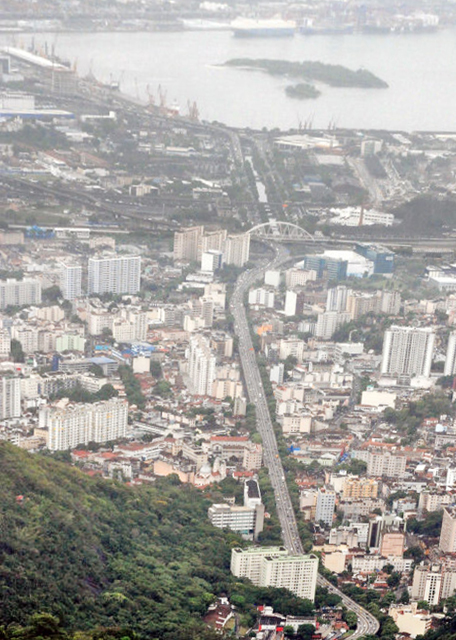
Avenida Presidente Vargas & Guanabara Bay (瓦尔加斯“牧场”总统大道与瓜纳巴拉湾) 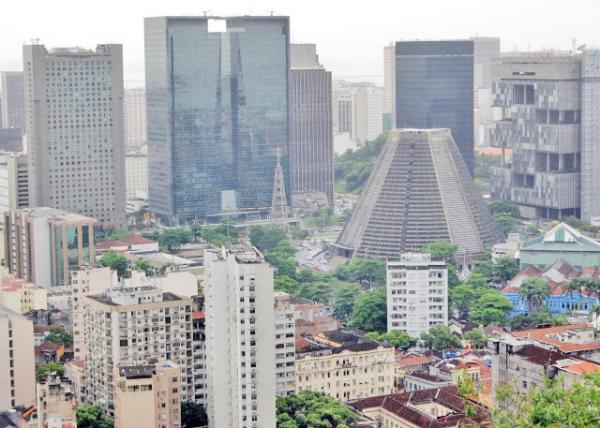 Metropolitan Cathedral of Rio de Janeiro in Mayan Architectural Style of Pyramids Metropolitan Cathedral of Rio de Janeiro in Mayan Architectural Style of Pyramids
(里约大都会教堂·玛雅金字塔式建筑风格)
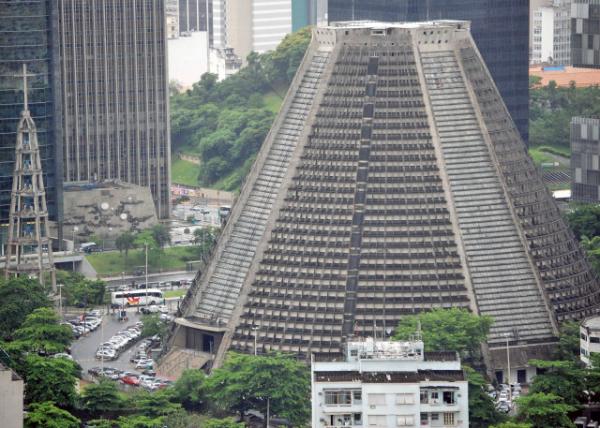 Metropolitan Cathedral w/ Its 4 Large Stained-Glass Panels Extended from Floor to Ceiling, Flooding the Interior w/ Colorful Light Metropolitan Cathedral w/ Its 4 Large Stained-Glass Panels Extended from Floor to Ceiling, Flooding the Interior w/ Colorful Light
(里约大都会教堂·拥有四块从地板延伸到天花板的大型彩色玻璃板,玻璃板使教堂内部充满了彩色的灯光) 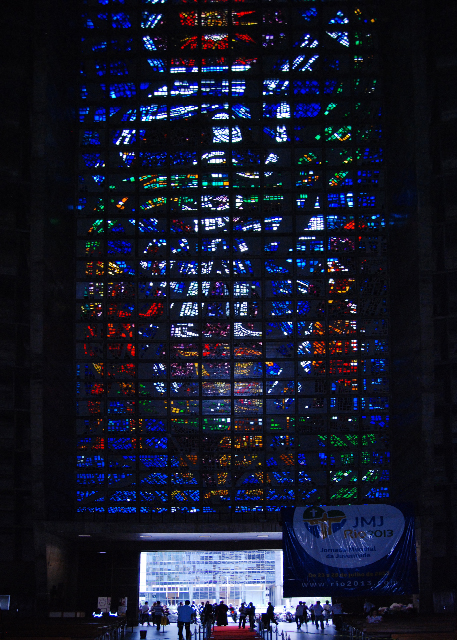
One of 4 Rectilinear Stained Glass Windows @ Metropolitan Cathedral (里约大都会教堂·四个直线花窗之一) 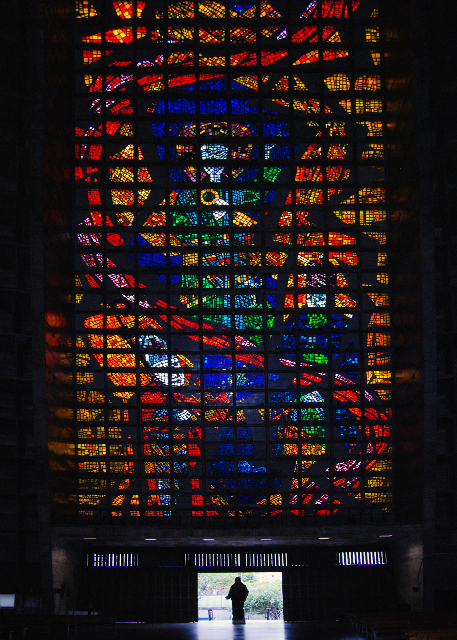
Two of Four Rectilinear Stained Glass Windows @ Metropolitan Cathedral (里约大都会教堂·四个直线花窗之二) 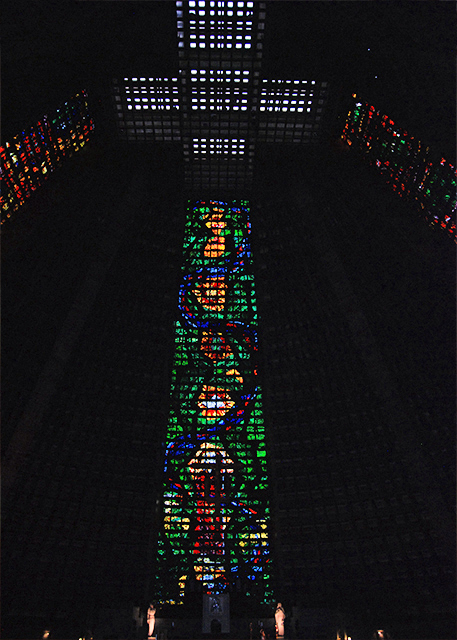
Conical Roof @ Metropolitan Cathedral (里约大都会教堂·圆锥形天花板) 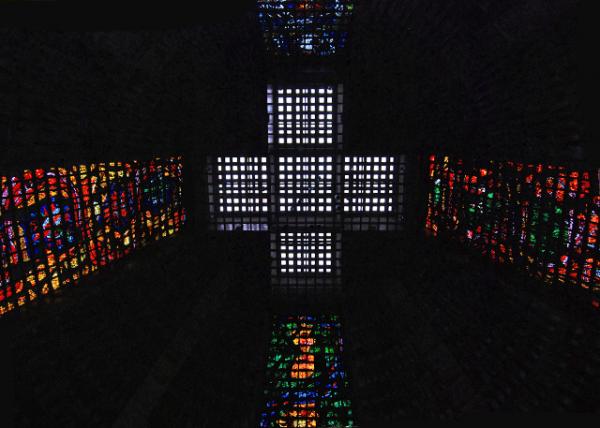 Conical Roof @ Metropolitan Cathedral of Rio de Janeiro Conical Roof @ Metropolitan Cathedral of Rio de Janeiro
(里约大都会教堂·圆锥形天花板) 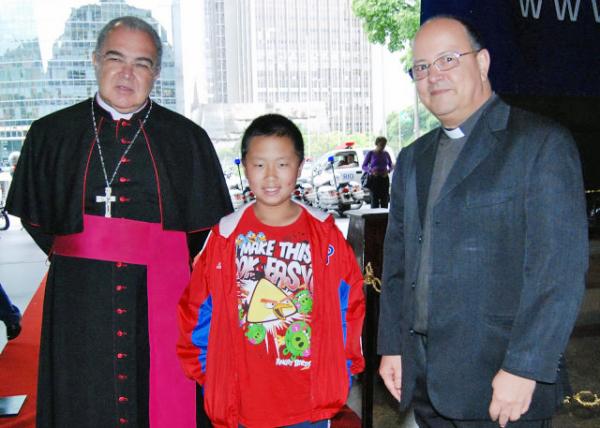 Archbishop @ Metropolitan Cathedral Archbishop @ Metropolitan Cathedral
(里约大都会教堂·枢机大主教 01-11-2013) 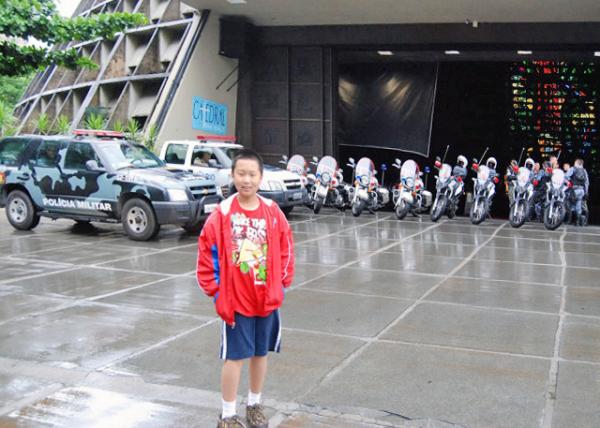 Police Motorcycles @ Metropolitan Cathedral of Rio de Janeiro Police Motorcycles @ Metropolitan Cathedral of Rio de Janeiro
(里约大都会教堂·摩托警车方阵 01-11-2013) 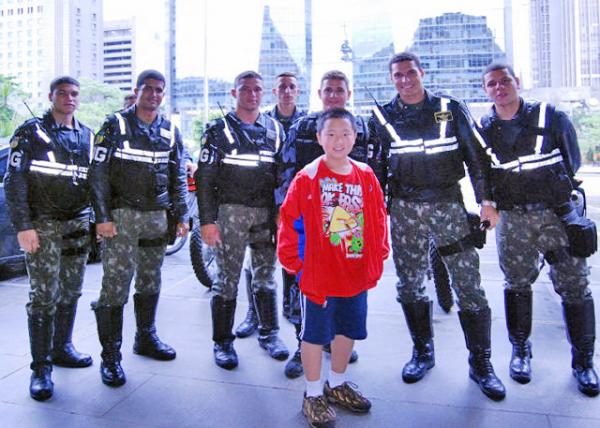 Archbishop-Patroled Policemen @ Metropolitan Cathedral of Rio de Janeiro Archbishop-Patroled Policemen @ Metropolitan Cathedral of Rio de Janeiro
(里约大都会教堂·保护枢机大主教的巡警 01-11-2013) 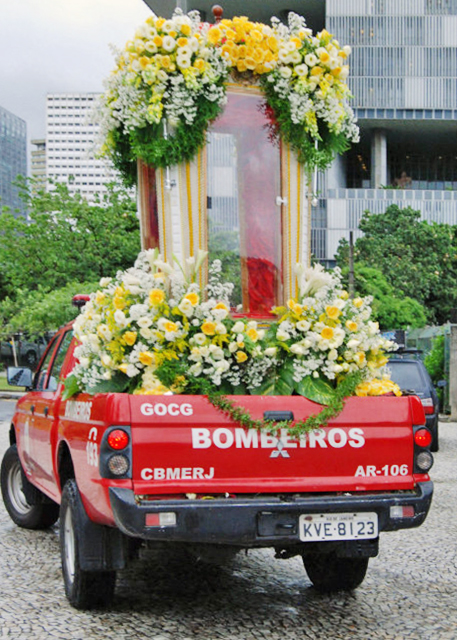
Procession of Saint Sebastian's Statue (圣塞巴斯蒂安雕像游行) 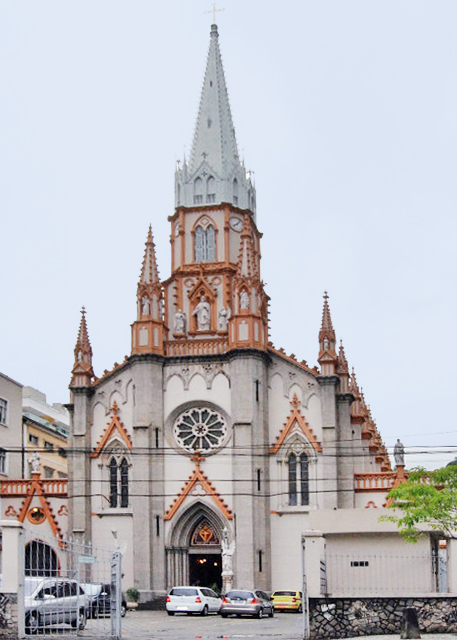
Parish Catholic Church (天主教教区教堂)
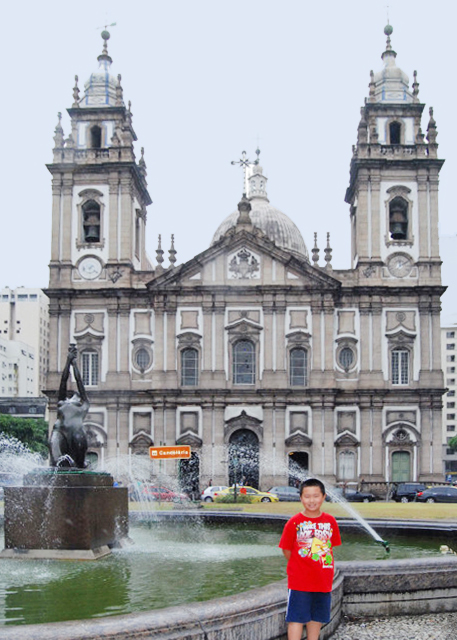
Façade of Candelária Church, a Mix of Rococo & Neoclassical Styles, w/ Influences from Portuguese Baroque in the Early 17th Century (坎德拉里亚教堂正面观·建于19世纪早期,融合了洛可可和新古典主义风格,并受到葡萄牙巴洛克风格的影响 01-11-2013) 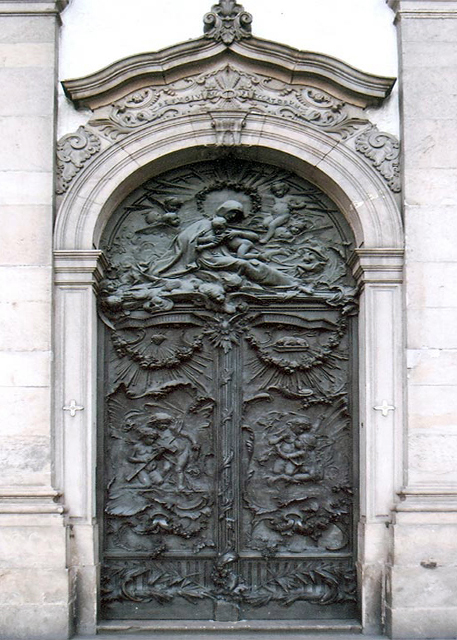
Exquisite Bronze Sculpture on the Portal of Candelária Church (坎德拉里亚教堂·大门上精美的青铜雕塑) 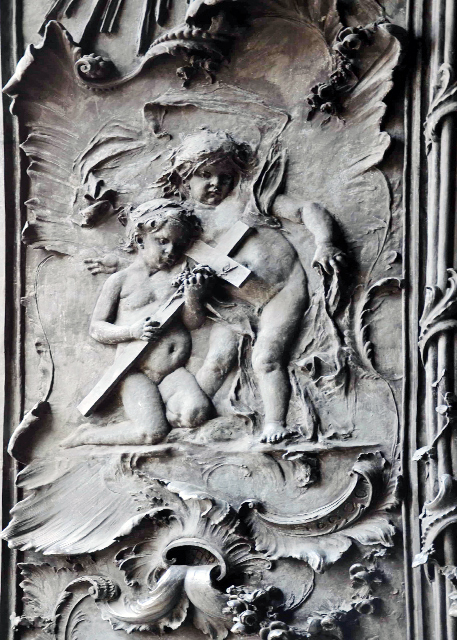
Candelária Church w/ Angels Carved in the Dark Wooden Door in the 18th Century (建于18世纪的坎德拉里亚教堂·深色木门上雕刻着天使)
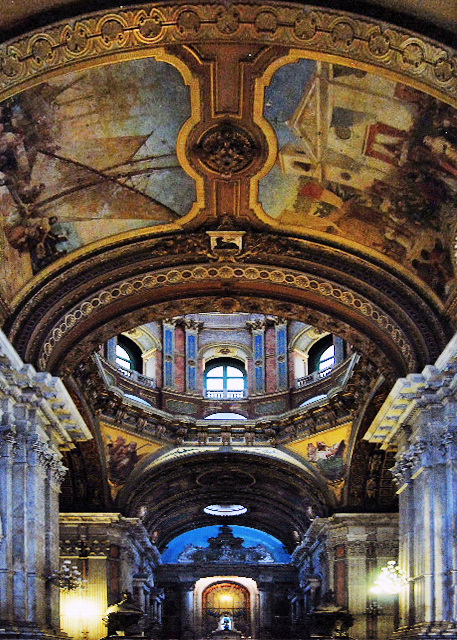
Candelária Church Designed w/ a Latin Cross Plan (坎德拉里亚教堂·采用拉丁十字设计) 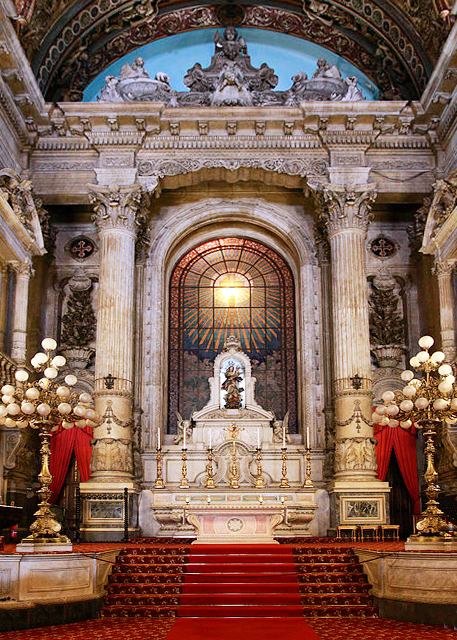
Altar of Candelária Church in the Neo-Renaissance Style (坎德拉里亚教堂祭坛·采用新文艺复兴风格) 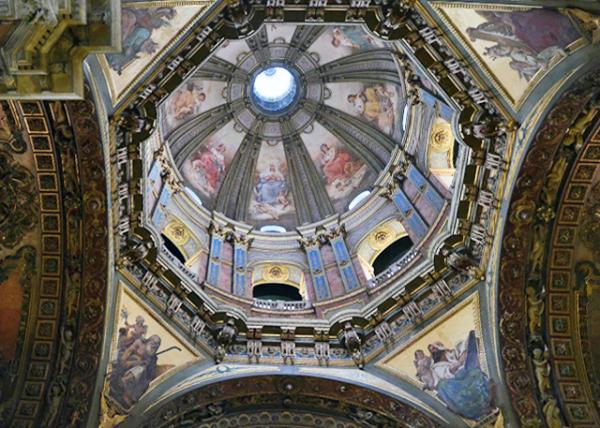 Interior Cupola View of the Baroqu-Styled Candelária Church w/ the Renaissance Paintings Interior Cupola View of the Baroqu-Styled Candelária Church w/ the Renaissance Paintings
(坎德拉里亚教堂·巴洛克风格的圆顶内景,饰有文艺复兴时期的绘画) 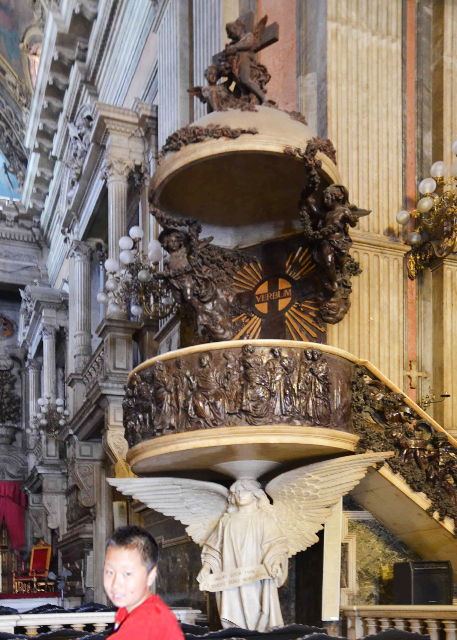
Monumental Bronze Pulpit in the Art Nouveau Style @ Candelária Church (坎德拉里亚教堂·新艺术风格的纪念性青铜讲坛 01-11-2013) 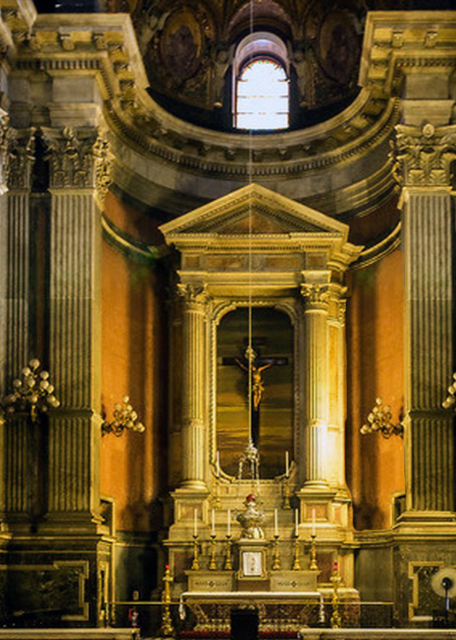
Chapel @ Candelária Church (坎德拉里亚教堂·礼拜堂) 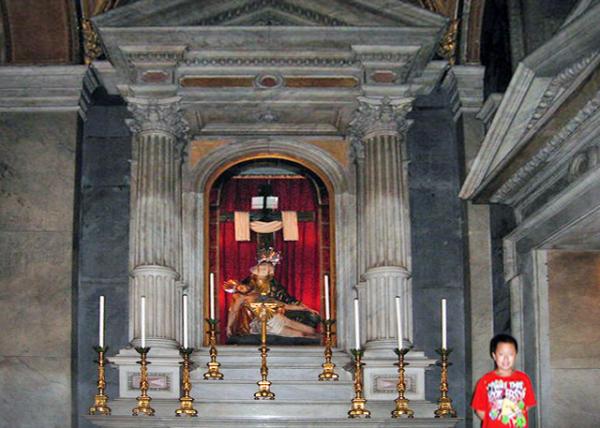 Transcept of Candelária Church Transcept of Candelária Church
(坎德拉里亚教堂·耳堂 01-11-2013) 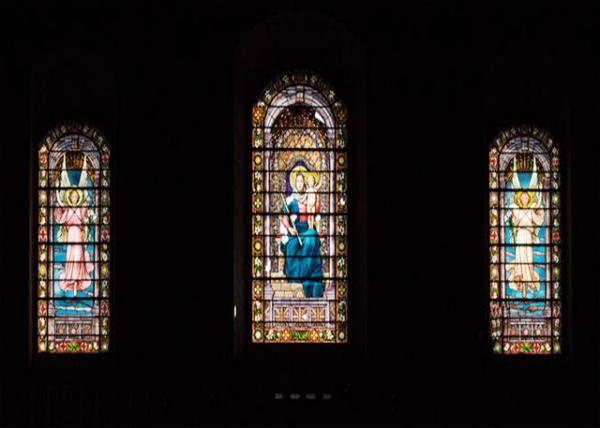 Stained Glass Windows of Candelária Church Stained Glass Windows of Candelária Church
(坎德拉里亚教堂·花窗) 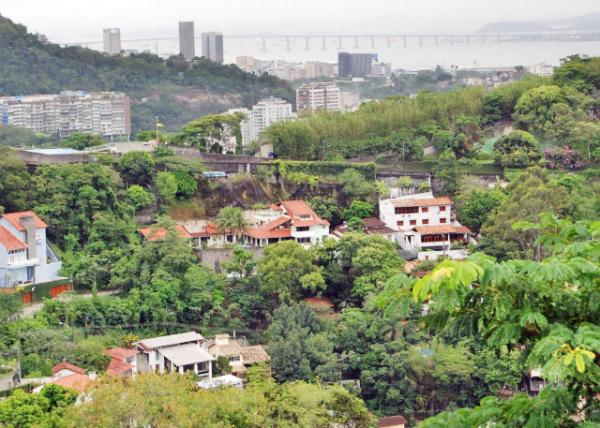 Laranjeiras, an Upper-Middle-Class Neighborhood against Rio-Niterói Bridge Laranjeiras, an Upper-Middle-Class Neighborhood against Rio-Niterói Bridge
(从拉兰热拉斯“橘子树”中上阶层社区远眺里奥—尼泰罗伊“里约—暗河”大桥)
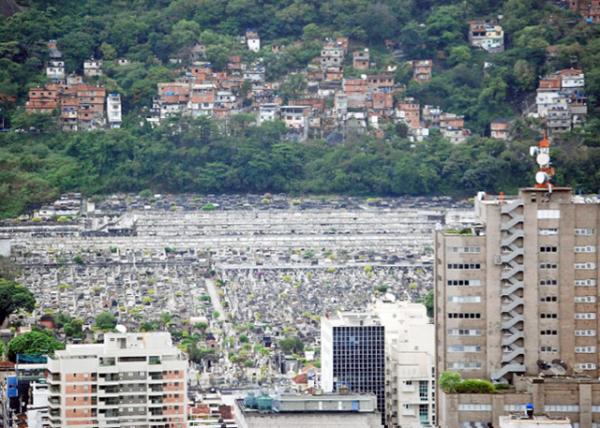 Caju Cemetery in the Mid-19th Century Art Nouveau Caju Cemetery in the Mid-19th Century Art Nouveau
(卡茹“腰果”公墓·19世纪中叶新艺术风格建筑) 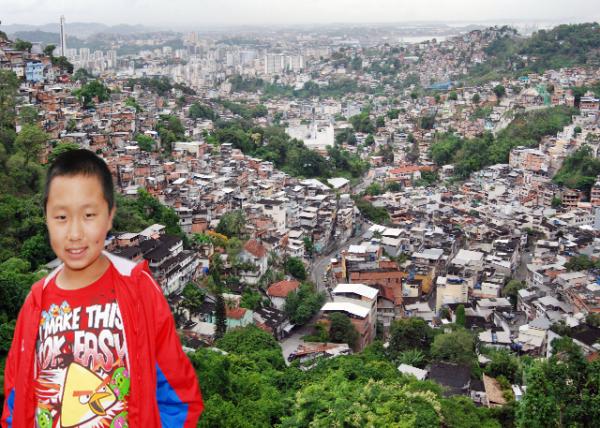 Santa Marta Favela w/ Roughly 8,000 Residents Santa Marta Favela w/ Roughly 8,000 Residents
(圣玛尔塔贫民窟·大约有8,000名居民 01-11-2013)
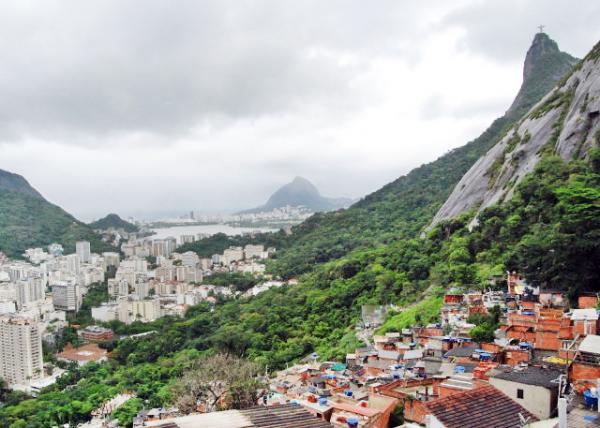 Morro Dona Marta over Botafogo Morro Dona Marta over Botafogo
(圣玛尔塔山·位于博塔弗戈“防火”区之上) 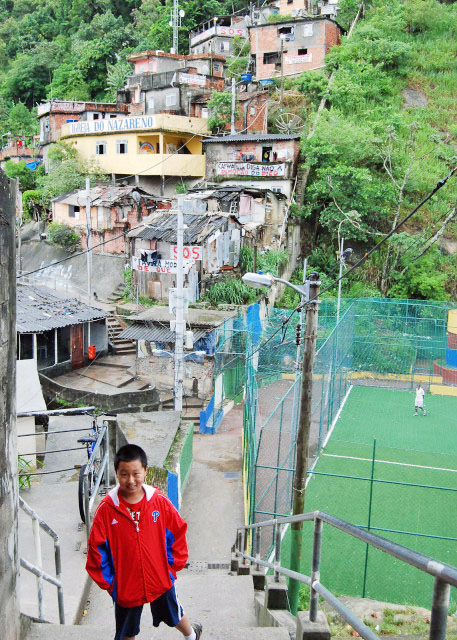
Compact Soccer Field in a Shanty Town @ Santa Marta Favela (圣玛尔塔贫民窟·棚户区小型足球场 01-11-2013) 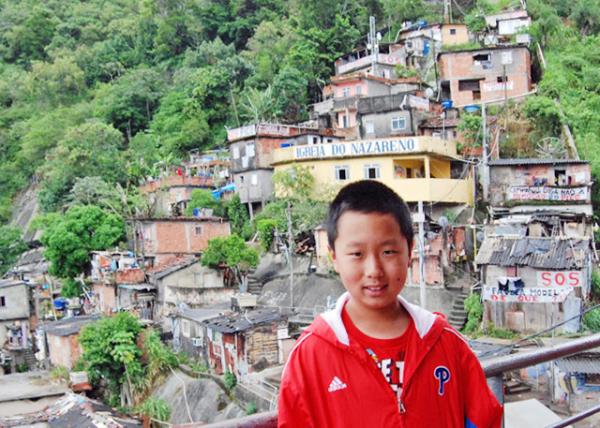 Santa Marta Favela w/ an Altitude of 352 Metres/1,155 Ft, Approximately 45o of Inclination Santa Marta Favela w/ an Altitude of 352 Metres/1,155 Ft, Approximately 45o of Inclination
(圣玛尔塔贫民窟·海拔 352米/1,155英尺,倾斜度约为45度 01-11-2013) 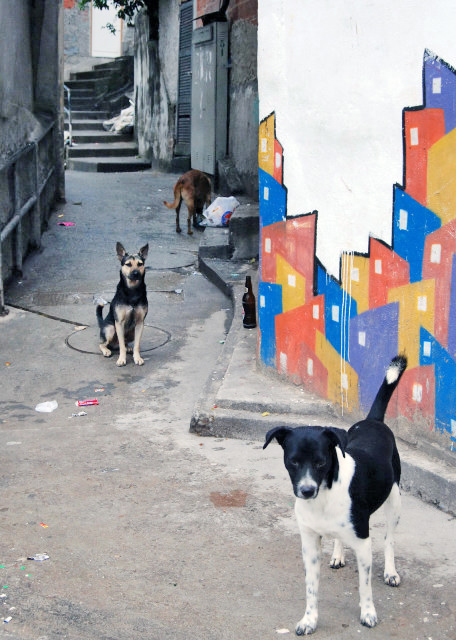
Homeless Dogs on Squatter Street @ Santa Marta Favela (圣玛尔塔贫民窟·寮屋街上流浪狗) 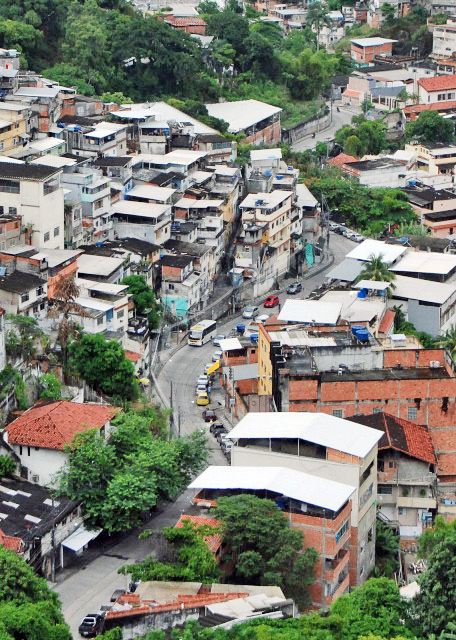
Winding & Narrow Street @ Santa Marta Favela (圣玛尔塔贫民窟·路况弯曲狭窄) 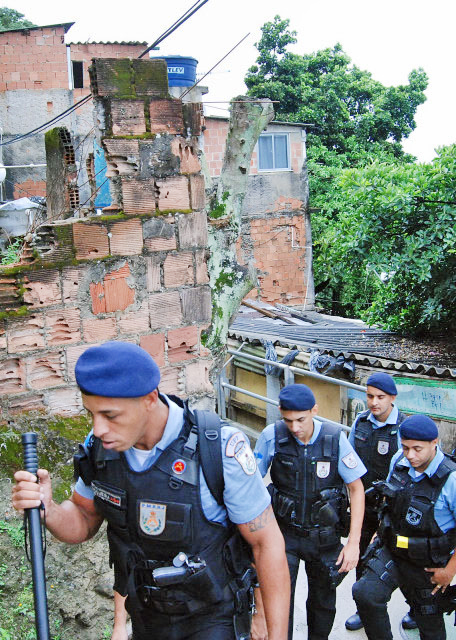
Pacifying Police Unit @ Santa Marta Favela (平定警察部队驻扎圣玛尔塔贫民窟) 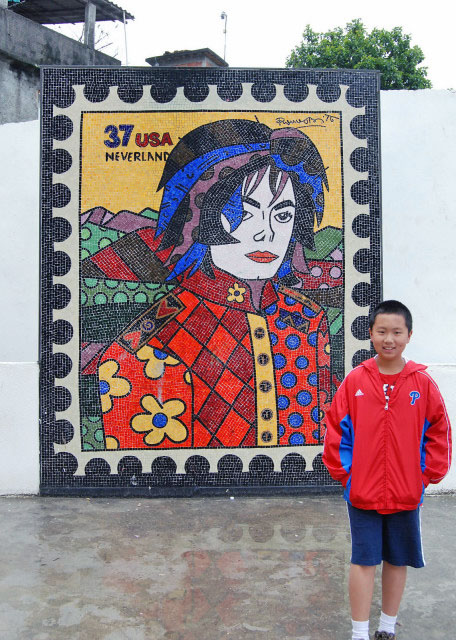
Stamp Statue of Michael Jackson @ Santa Marta Favela (圣玛尔塔贫民窟——神赐·神慈之子邮票雕像 01-11-2013) 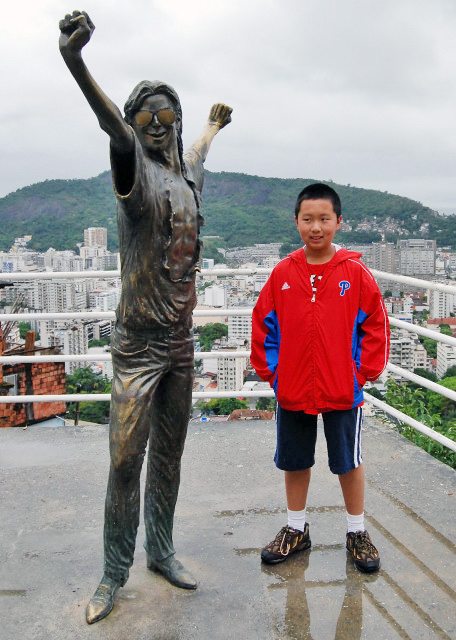
Backdrop of "They Don't Care About Us" by Michael Jackson @ Santa Marta Favela (圣玛尔塔贫民窟——迈克·杰克逊《他们不在乎我们》拍摄地 01-11-2013) 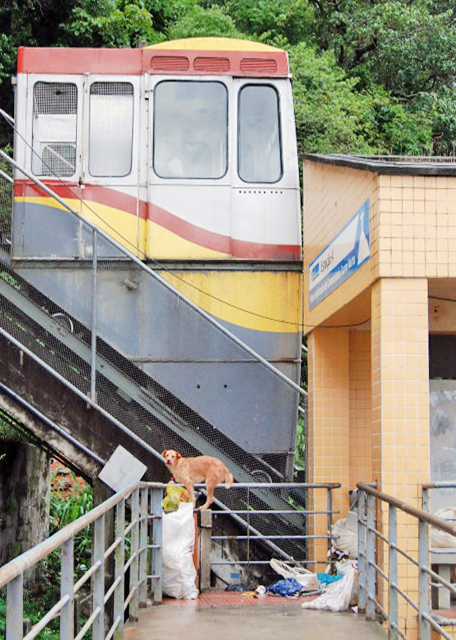
Homeless Dog Dug for Food from Trash @ Tram Station, Santa Marta Favela (圣玛尔塔贫民窟·有轨电车) 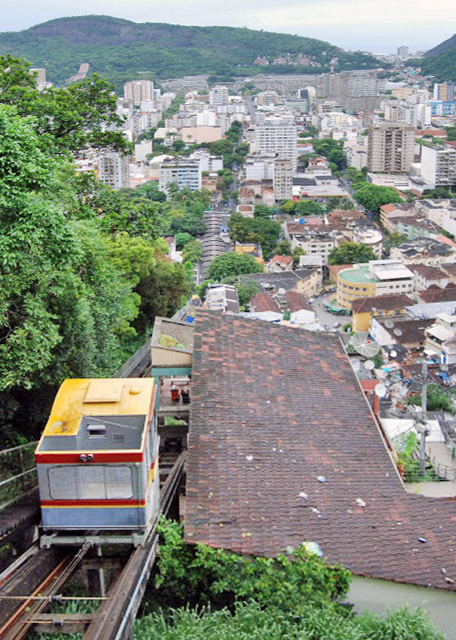
Tram Running through Santa Marta Favela (圣玛尔塔贫民窟·有轨电车)
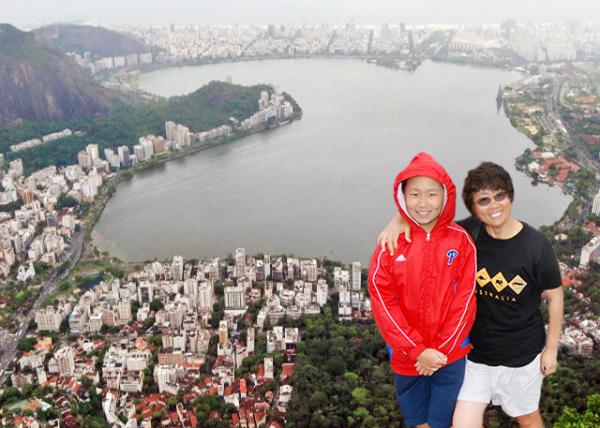 Rodrigo de Freitas Lagoon (葡萄牙军人泻湖 01-11-2013) Rodrigo de Freitas Lagoon (葡萄牙军人泻湖 01-11-2013)
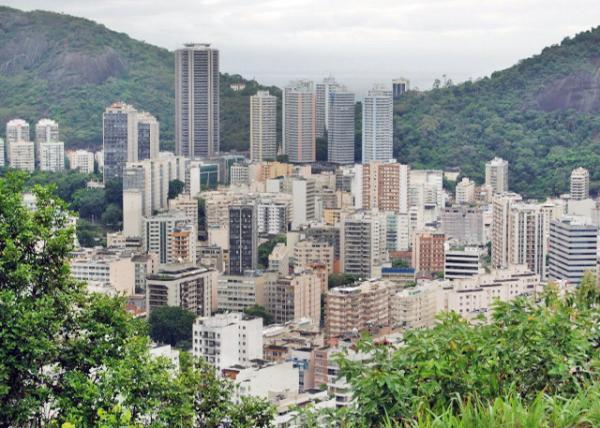 Leblon, the Most Expensive Brand in Latin America Leblon, the Most Expensive Brand in Latin America
(莱布隆区·拉美最昂贵的楼价盘)
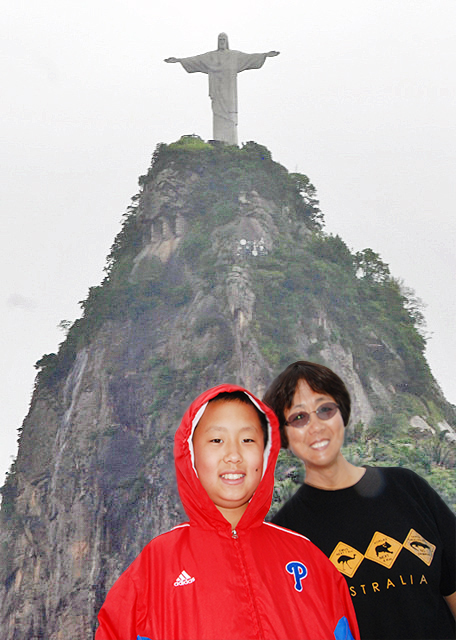
Christ the Redeemer Statue, the Symbol of Christianity & Icon of Rio and Brazil on Corcovado (科尔科瓦多山救世基督像·基督教的象征,里约和巴西的标志 01-11-2013) 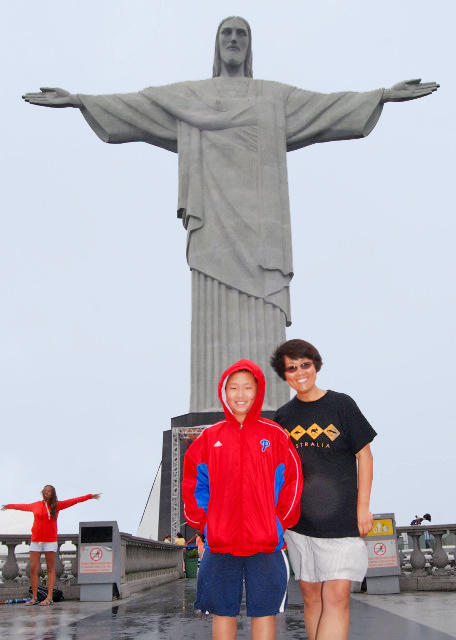
Christ the Redeemer Completed in 1931 on Corcovado (科尔科瓦多山·伫立于1931年的救世基督像 01-11-2013)
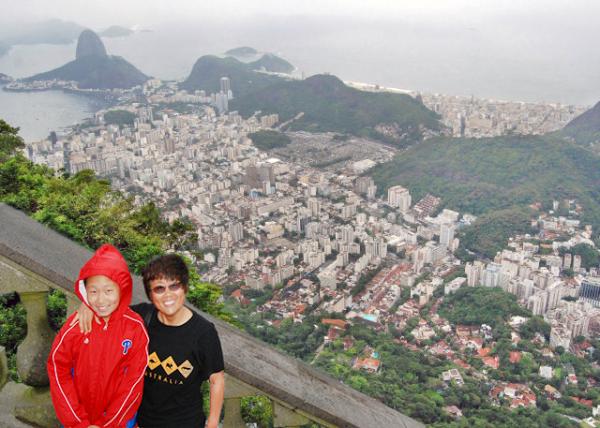 Lagoa, An Affluent Residential Neighborhood Lagoa, An Affluent Residential Neighborhood
(拉各阿“泻湖”富人住宅区 01-11-2013) 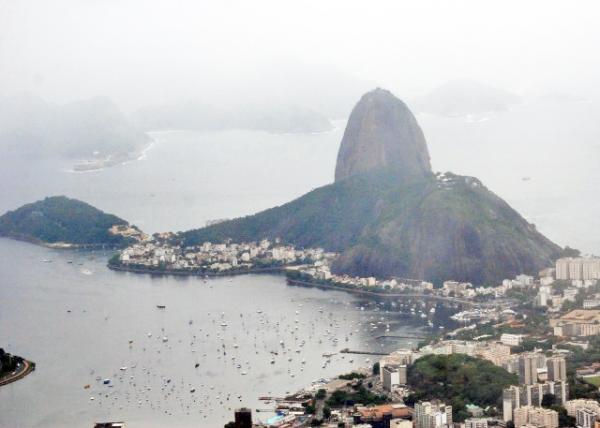
Guanabara Bay, the Largest Bay in the World Based on Volume of Water (瓜纳巴拉湾·世上水量最大的海湾) 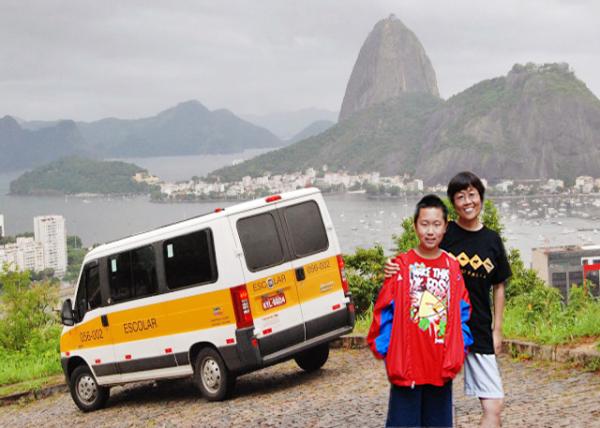 Mirante Dona Marta, a Popular Spot for for Photographers & Nature Lovers, Particularly @ Sunrise & Sunset Mirante Dona Marta, a Popular Spot for for Photographers & Nature Lovers, Particularly @ Sunrise & Sunset
(玛尔塔夫人观景点·摄影师和自然爱好者的热门景地,尤其是在日出和日落时分) 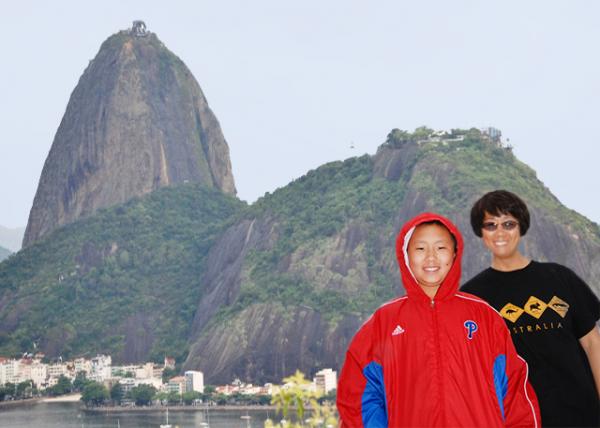 Sugarloaf Mtn, a Late Devonian Age Volcano Sugarloaf Mtn, a Late Devonian Age Volcano
(甜面包山·晚泥盆世火山 01-11-2013) 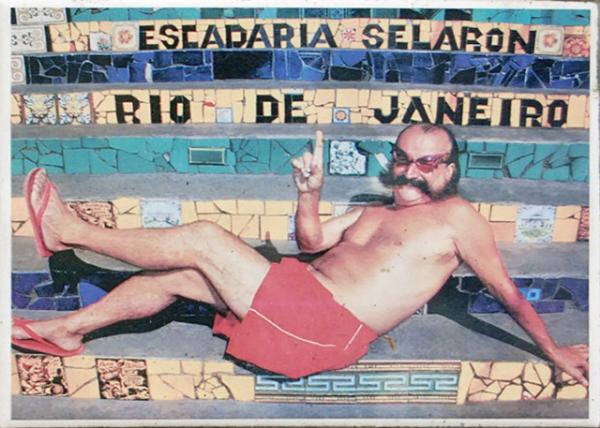 Self-Portrait of Selarón @ Escadaria Selarón Self-Portrait of Selarón @ Escadaria Selarón
(塞拉隆阶梯·《塞拉隆》自画像) 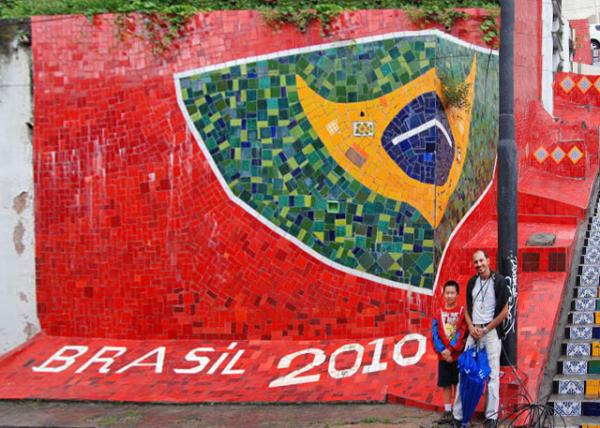 Tour Guide Madson by Brazilian Natl Flag @ Escadaria Selarón Tour Guide Madson by Brazilian Natl Flag @ Escadaria Selarón
(塞拉隆阶梯·巴西国旗旁与导游麦迪森 01-11-2013) 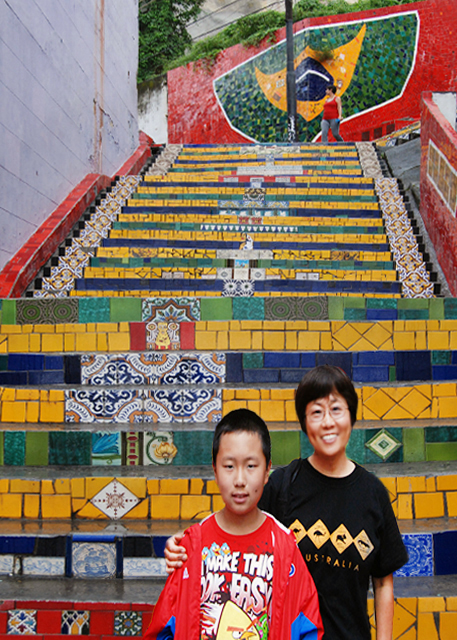
Escadaria Selarón, a Symbol of Unity & Love, Representing the Coming Together of Different Cultures & the Artist's Dedication to His Vision (塞拉隆阶梯·团结与友爱的象征,代表不同文化的融合和艺术家对其愿景的奉献 01-11-2013) 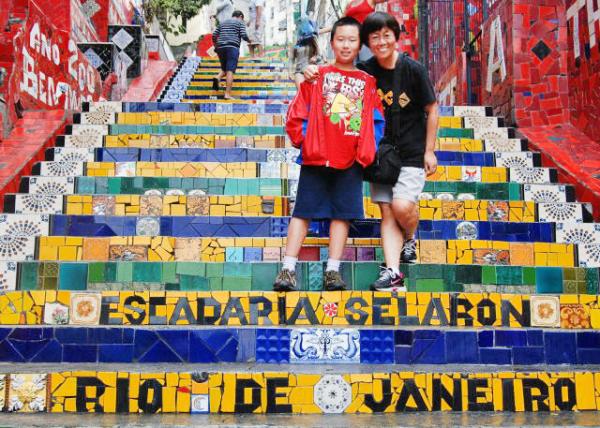 215 Steps Measuring 125 Metres Long @ Escadaria Selarón 215 Steps Measuring 125 Metres Long @ Escadaria Selarón
(塞拉隆阶梯·215个台阶长达125米 01-11-2013) 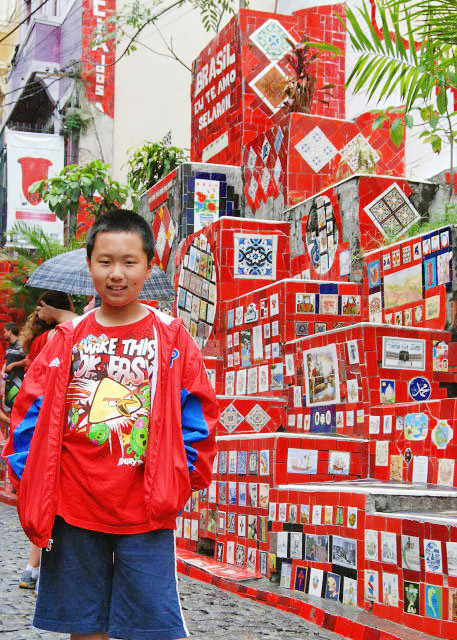
Selarón died here on 01-10-2013, the day before we visited. (塞拉隆2013年1月10日死于此地,亦即我们到访的前一天 01-11-2013) 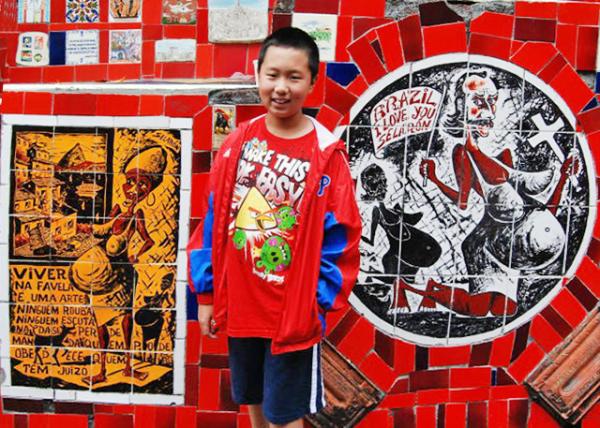 A Pregnant African Woman & Selarón @ Escadaria Selarón A Pregnant African Woman & Selarón @ Escadaria Selarón
(塞拉隆阶梯·非洲孕妇与塞拉隆孕态 01-11-2013) 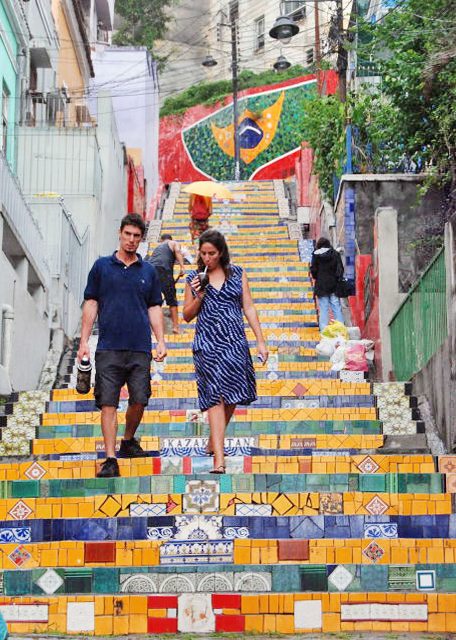
Mate Drinker @ Escadaria Selarón (塞拉隆阶梯·喝马黛茶“葫芦草”的当地人)
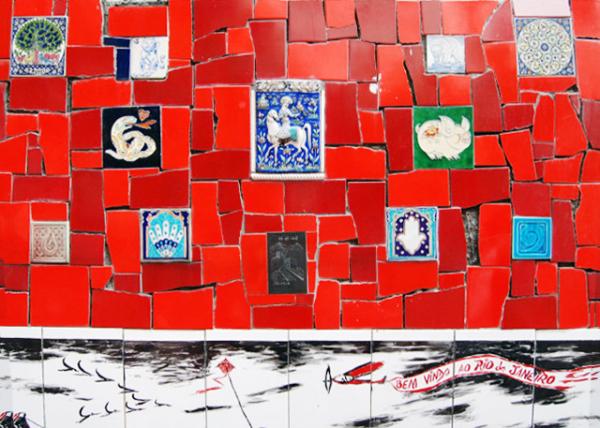 Selarón's Works @ Escadaria Selarón Selarón's Works @ Escadaria Selarón
(塞拉隆阶梯·塞拉隆作品) 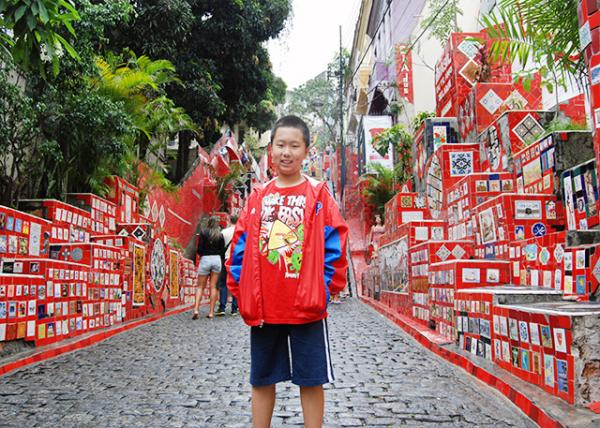 > 2000 Tiles Collected from > 60 Countries around the World @ Escadaria Selarón > 2000 Tiles Collected from > 60 Countries around the World @ Escadaria Selarón
(塞拉隆阶梯·从世界60多个国家收集来的2000多块瓷砖 01-11-2013) 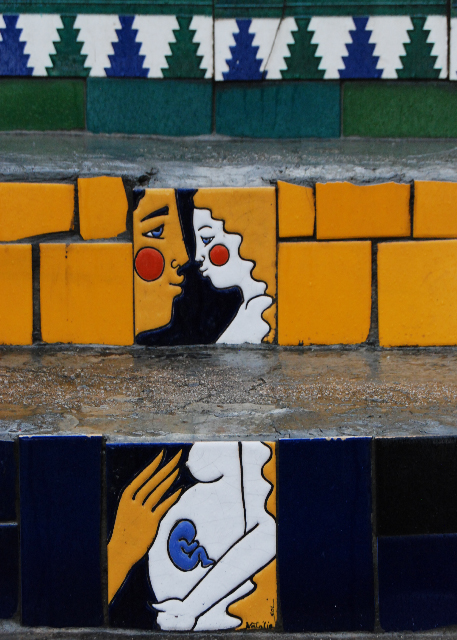
A Man, Woman, & Fetus @ Escadaria Selarón (塞拉隆阶梯·男人、女人和胎儿)
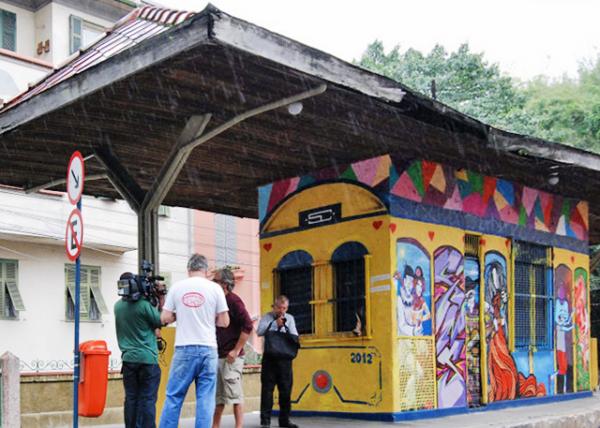 Bus Station @ Santa Teresa (圣特蕾莎街区·公交车站) Bus Station @ Santa Teresa (圣特蕾莎街区·公交车站)
 Santa Teresa w/ Its Colonial Charm Santa Teresa w/ Its Colonial Charm
(圣特蕾莎街区·殖民魅力 01-11-2013) 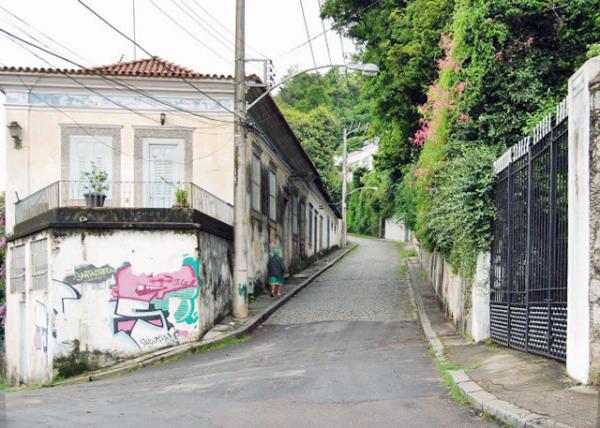 Steep & Winding Santa Teresa Streets Steep & Winding Santa Teresa Streets
(圣特蕾莎街区·陡峭弯曲) 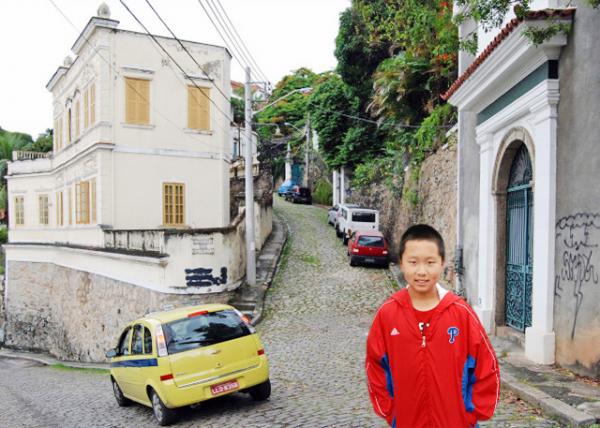 Picturesque Corner in the Santa Teresa Neighbourhood Picturesque Corner in the Santa Teresa Neighbourhood
(圣特蕾莎街区·风景如画的角落 01-11-2013) 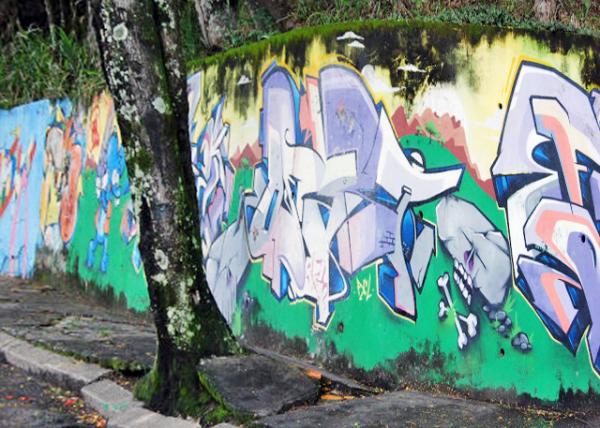 Graffiti @ Santa Teresa (圣特蕾莎街区·涂鸦) Graffiti @ Santa Teresa (圣特蕾莎街区·涂鸦)
 Street Art @ Santa Teresa (圣特蕾莎街区·街头艺术) Street Art @ Santa Teresa (圣特蕾莎街区·街头艺术)
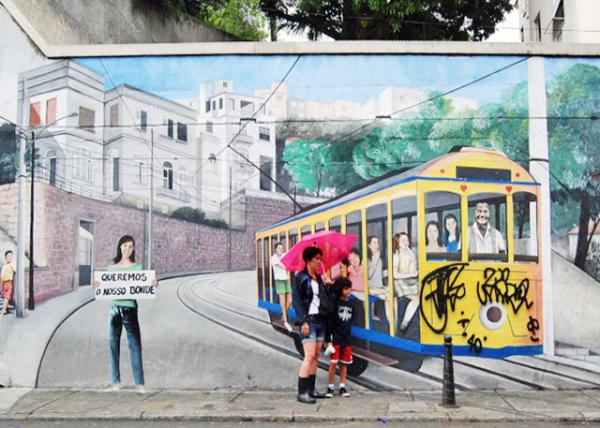 Mural of Historic "Bonde" (Tram) @ Santa Teresa Mural of Historic "Bonde" (Tram) @ Santa Teresa
(圣特蕾莎街区·标志性电车壁画) 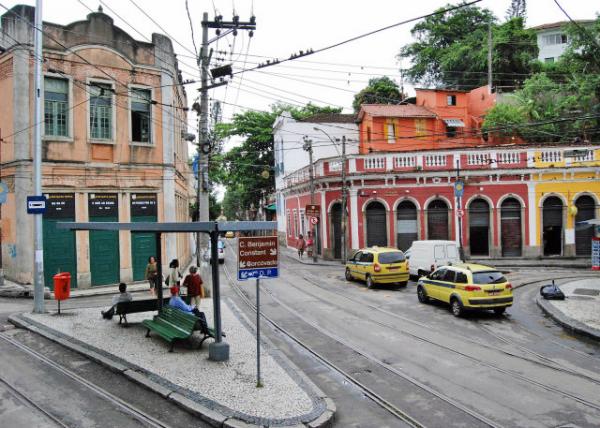 Largo do Guimarães, the Bohemian Gathering Point @ Santa Teresa Largo do Guimarães, the Bohemian Gathering Point @ Santa Teresa
(圣特蕾莎街区吉马良斯“葡萄牙人”广场·波希米亚“远离社会传统规范和期望的生活方式”者聚集地) 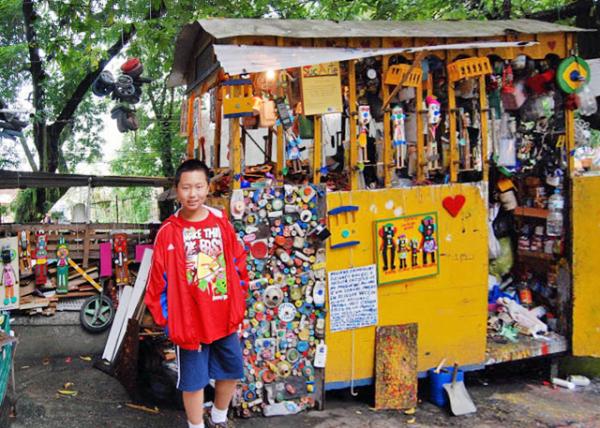 Toy Artisan @ Santa Teresa Toy Artisan @ Santa Teresa
(圣特蕾莎街区·玩具工匠 01-11-2013) 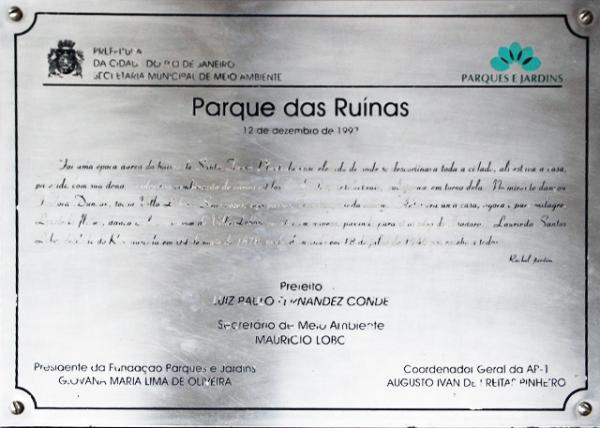 Parque das Ruinas Offering a Unique Panoramic View of Rio Parque das Ruinas Offering a Unique Panoramic View of Rio
(废墟公园·欣赏里约独特全景之地) 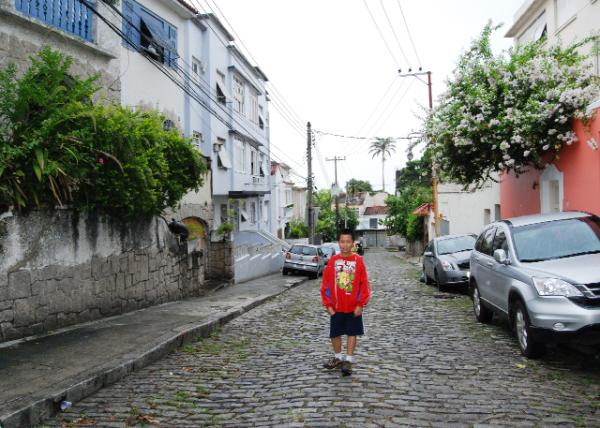 R. Murtinho Nobre, the Location of the Ruin's Park R. Murtinho Nobre, the Location of the Ruin's Park
(穆蒂尼奥·诺布雷“战神·高贵”街——遗址公园的所在地 01-11-2013) 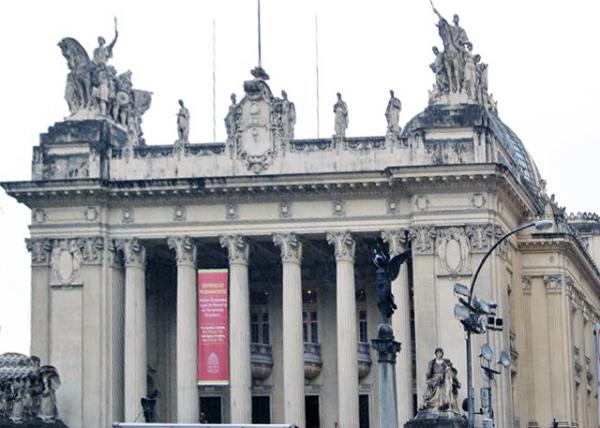 Tiradentes Palace, in the Early 20th-Century Eclecticism Tiradentes Palace, in the Early 20th-Century Eclecticism
(蒂拉登特斯宫·20世纪初期折中主义建筑) 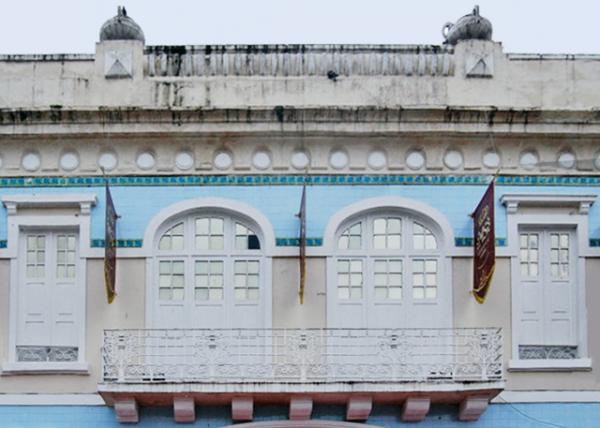 Clonial Bldg (殖民式建筑) Clonial Bldg (殖民式建筑)
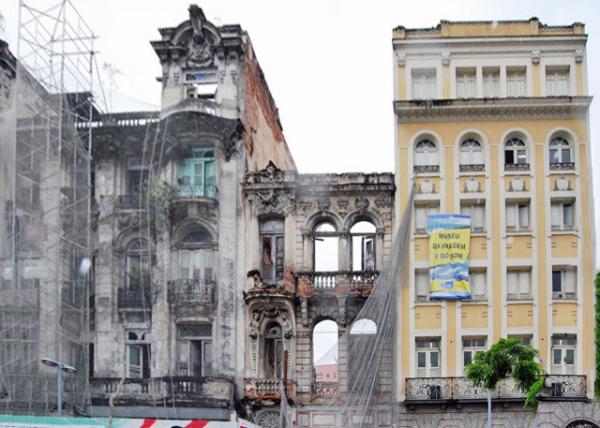 Portuguese Colonial Bldg along the Avenida Repœblica do Paraguai in the Lapa Neighborhood Portuguese Colonial Bldg along the Avenida Repœblica do Paraguai in the Lapa Neighborhood
(拉帕“帽贝”社区巴拉圭共和国大道沿线的葡萄牙殖民建筑)
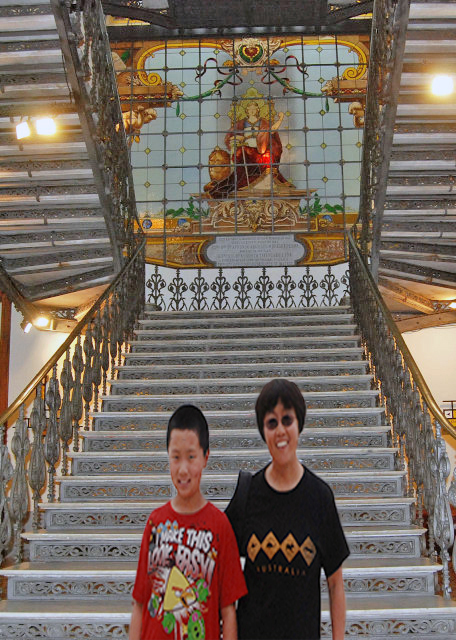
Federal Justice Cultural Center, the Former Site of the Federal Supreme Court in the Eclectic Style (联邦司法文化中心·折衷主义式前联邦最高法院建筑 01-11-2013)
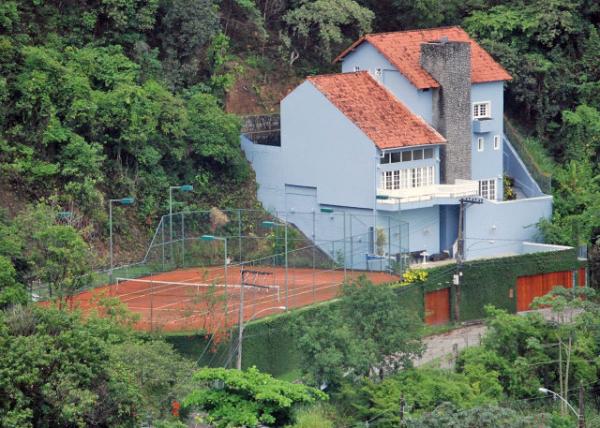 Private House (私宅) Private House (私宅)

Carioca Aqueduct, a Historical Water Supply Built in the 18th Century to Transport water from the Carioca River to the City (卡里奥卡河渠·18世纪供水系统,将卡里奥卡河水输送到城里) 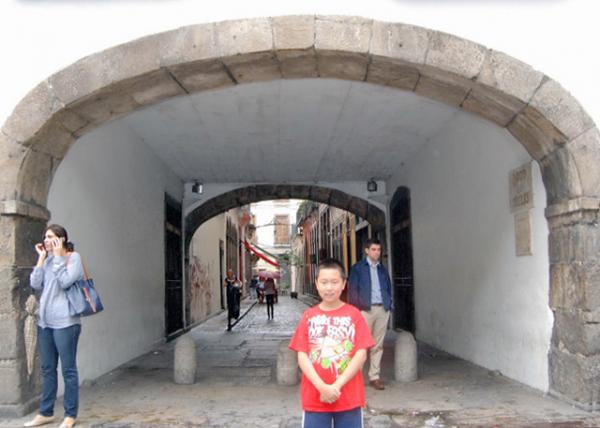 Arco do Teles, Built in the 18th Century as a Part of the Cultural Landscape of the Vibrant City Arco do Teles, Built in the 18th Century as a Part of the Cultural Landscape of the Vibrant City
(特莱斯凯旋门·建于18世纪,成为城市充满活力的文化景观一部分 01-11-2013) 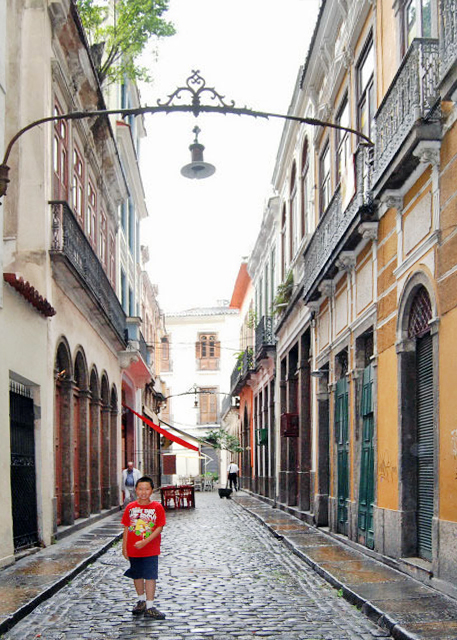
Travessa do Comércio, a Popular Gathering Place (商业街·热门聚会场所 01-11-2013) 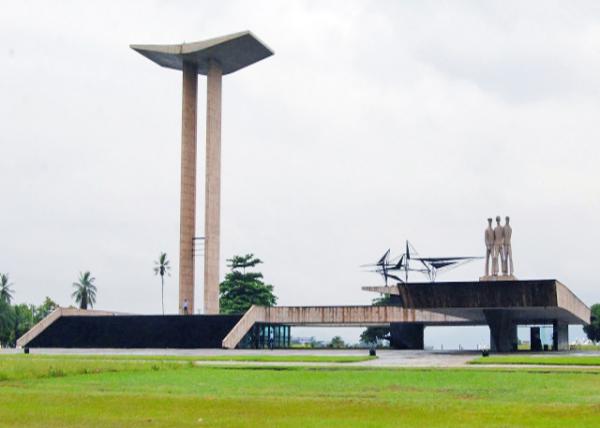 Monument to the Dead of World War II Featuring Modernist Design Monument to the Dead of World War II Featuring Modernist Design
(《二战烈士》纪念碑·具有现代主义设计) 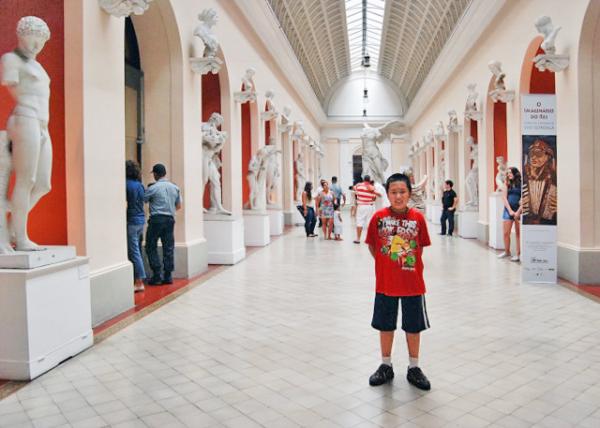 A Collection of Plaster Copies of Ancient Statues @ Natl Museum of Fine Arts A Collection of Plaster Copies of Ancient Statues @ Natl Museum of Fine Arts
(国家美术馆·古代雕像石膏赝品收藏 01-11-2013) 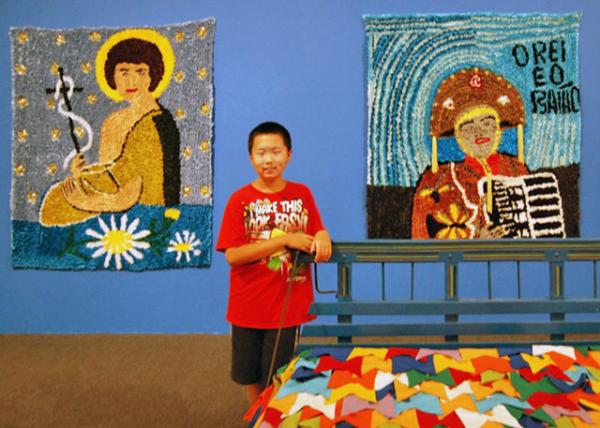 Brazilian Folk Collection @ Natl Museum of Fine Arts Brazilian Folk Collection @ Natl Museum of Fine Arts
(国家美术馆·巴西民间艺术 01-11-2013) 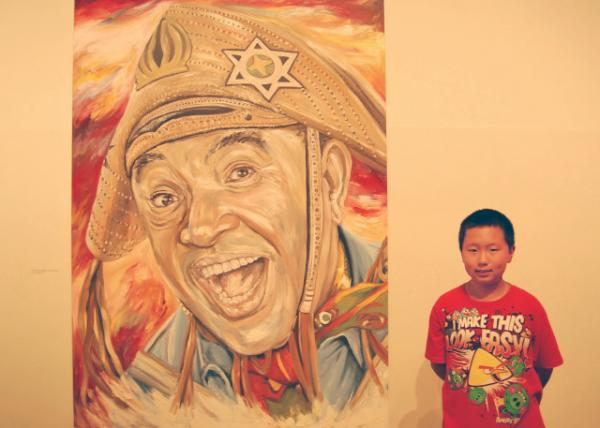 Getúlio Vargas @ Natl Museum of Fine Arts Getúlio Vargas @ Natl Museum of Fine Arts
(国家美术馆——巴西总统热图利奥·巴尔加斯“神爱·茅屋” 01-11-2013) 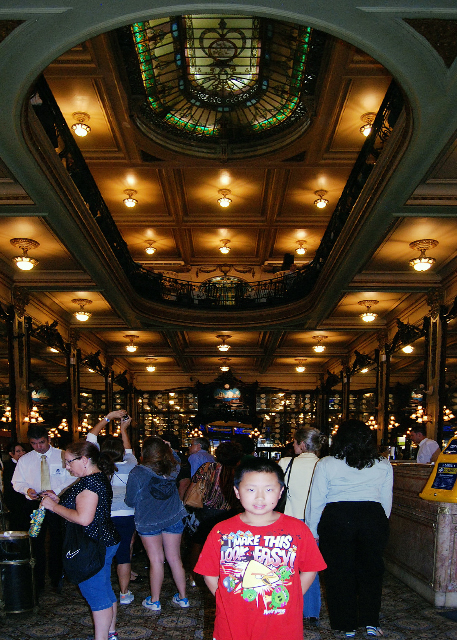
Belle Époque Architecture of Confeitaria Colombo in 1894 (科伦坡糕点店·19世纪美好年代的建筑 01-11-2013) 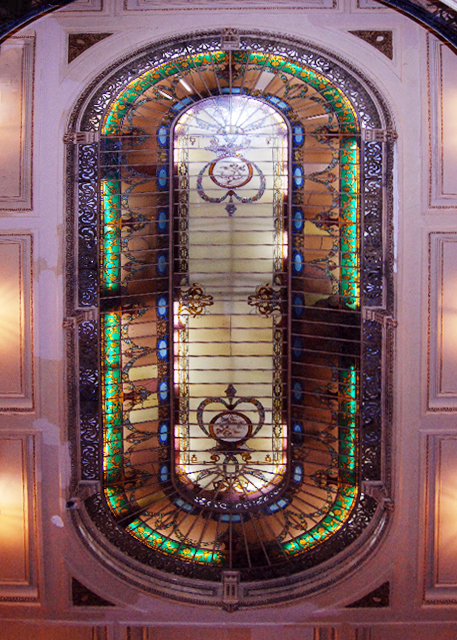
Confeitaria Colombo w/ Stained Glass Ceiling (科伦坡糕点店·彩色玻璃天花板) 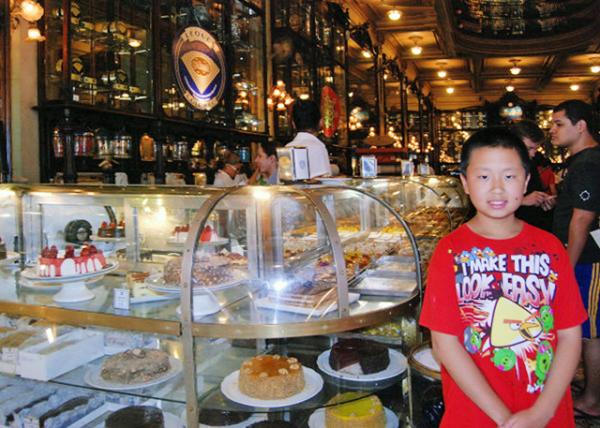 Patisserie @ Confeitaria Colombo Patisserie @ Confeitaria Colombo
(科伦坡糕点店·糕点 01-11-2013) 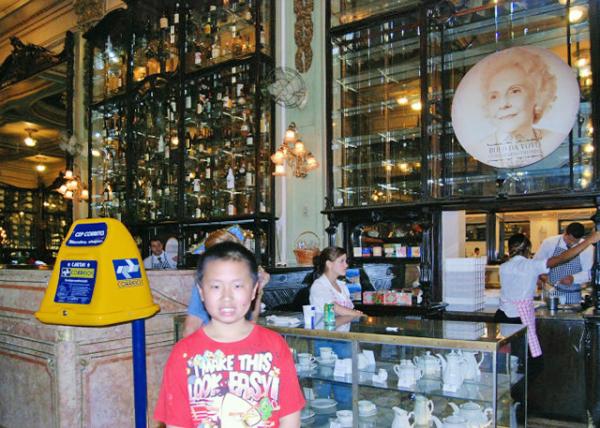 Bar @ Confeitaria Colombo Bar @ Confeitaria Colombo
(科伦坡糕点店·吧台 01-11-2013)  Cotonduba Island near Copacabana Beach Cotonduba Island near Copacabana Beach
(科通杜巴岛·科帕卡巴纳海滩外 01-11-2013) 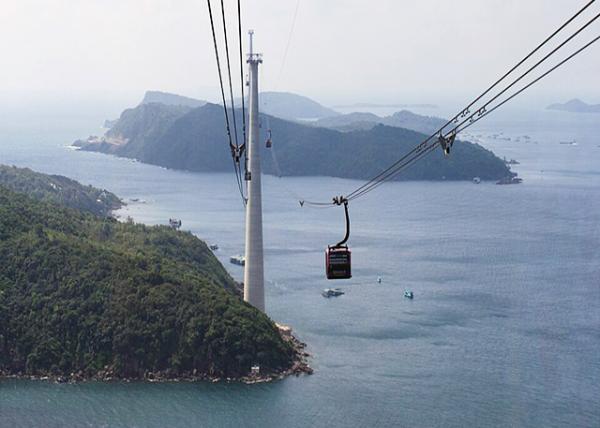 Sugarloaf Mountain Cable Car through Cotonduba Island Sugarloaf Mountain Cable Car through Cotonduba Island
(甜面包山缆车穿过科通杜巴岛)
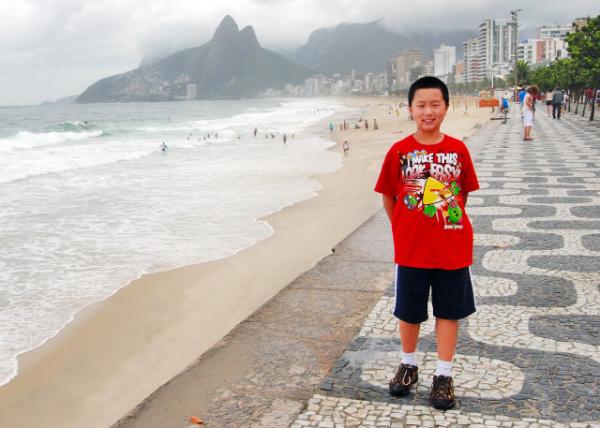 Portuguese Pavement Wave Pattern @ Copacabana Beach Portuguese Pavement Wave Pattern @ Copacabana Beach
(科帕卡巴纳海滩·葡萄牙波浪式路面 01-11-2013) 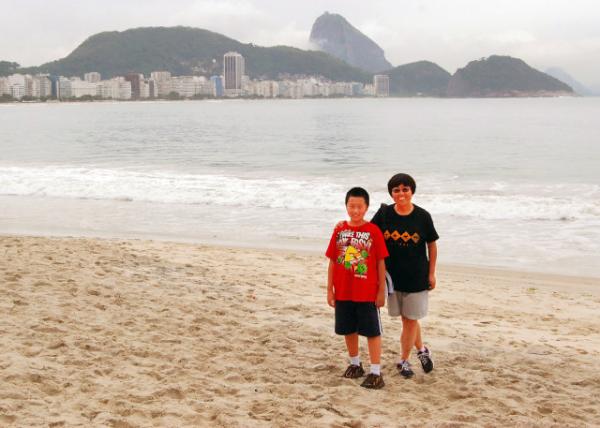 Copacabana White Sand Beach Copacabana White Sand Beach
(科帕卡巴纳白沙海滩 01-11-2013) 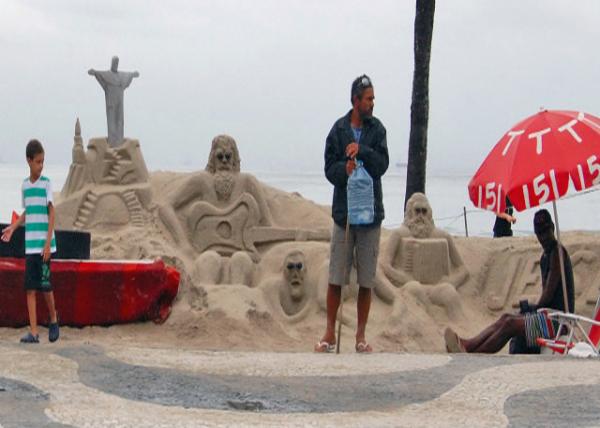 Sand Sculptures of Cristo Redentor & Musicians @ Copacabana Beach Sand Sculptures of Cristo Redentor & Musicians @ Copacabana Beach
(科帕卡巴纳海滩·沙雕《基督救世主》和《音乐家》) 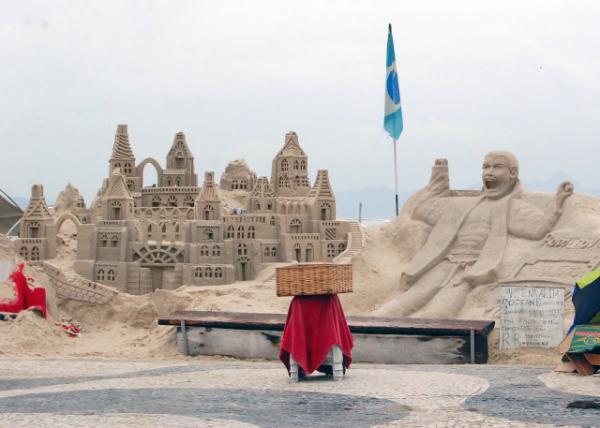
Sandcastles @ Copacabana Beach (科帕卡巴纳海滩·沙堡) 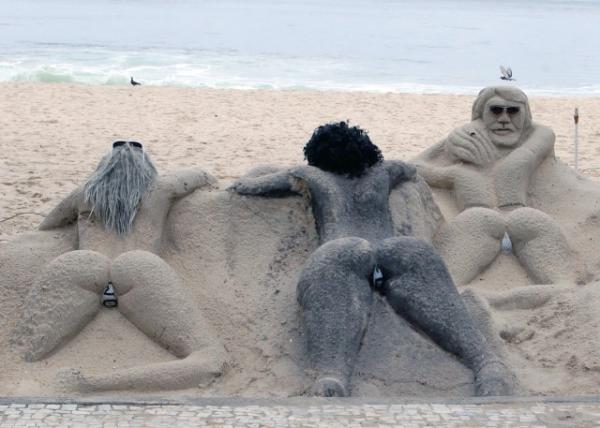
Art in the Sand @ Copacabana Beach (科帕卡巴纳海滩·沙中艺术) 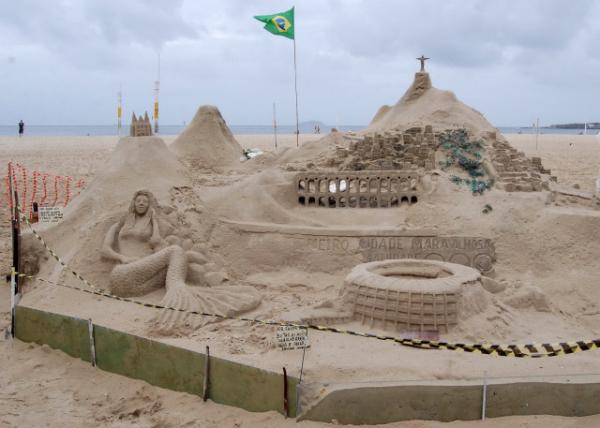 Sand Mermaid @ Copacabana Beach Sand Mermaid @ Copacabana Beach
(科帕卡巴纳海滩·美人鱼沙雕) 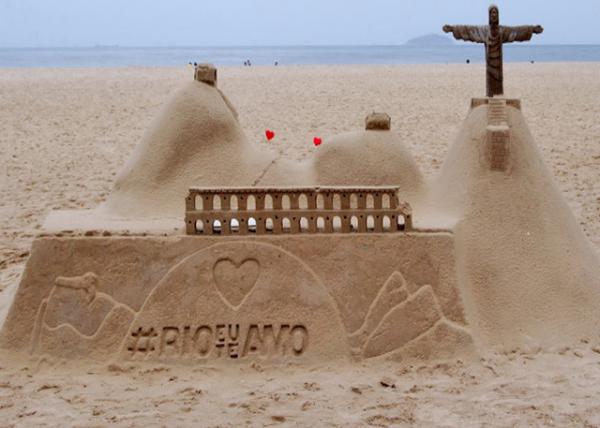 Cristo Redentor, the Sand Sculpture, Blessing the Beach Umbrellas & the People Beneath Them @ Copacabana Beach Cristo Redentor, the Sand Sculpture, Blessing the Beach Umbrellas & the People Beneath Them @ Copacabana Beach
(科帕卡巴纳海滩·基督救世主沙雕,祝福沙滩伞和伞下的人们) 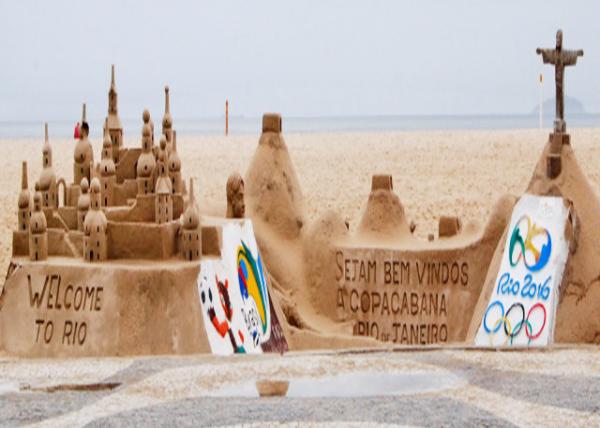 2016 Olympic Games Logo @ Copacabana Beach 2016 Olympic Games Logo @ Copacabana Beach
(科帕卡巴纳海滩·2016年奥运会标志沙雕)
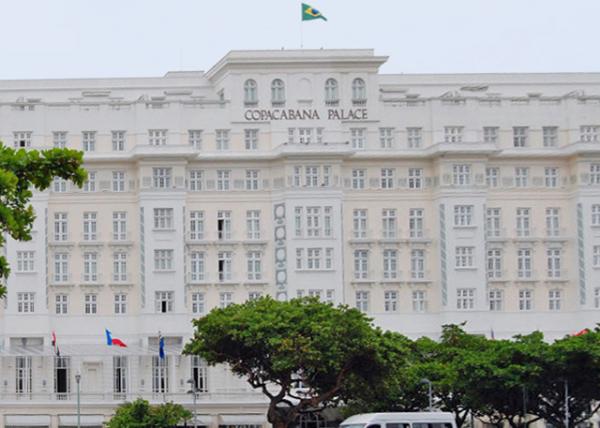 Copacabana Palace, a "Hall of Fame" for Notable Guests Copacabana Palace, a "Hall of Fame" for Notable Guests
(科帕卡巴纳宫酒店·显要贵宾的“名人堂”)
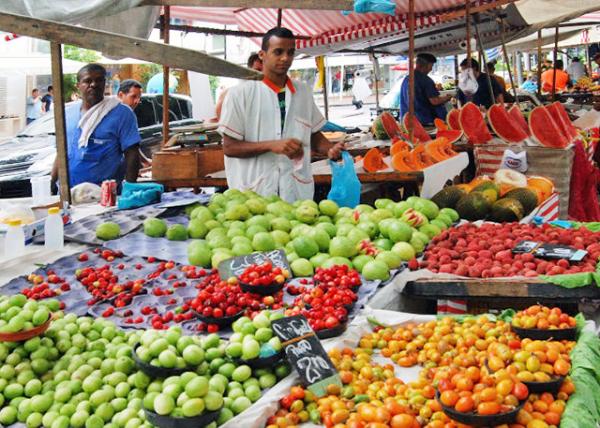 Flea Market behind Copacabana Palace Flea Market behind Copacabana Palace
(科帕卡巴纳宫酒店背面的自由市场) 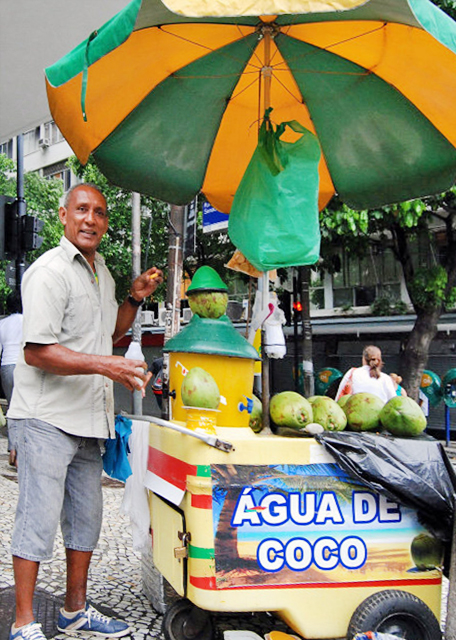
Coconut Milk Vendor (椰汁地摊) 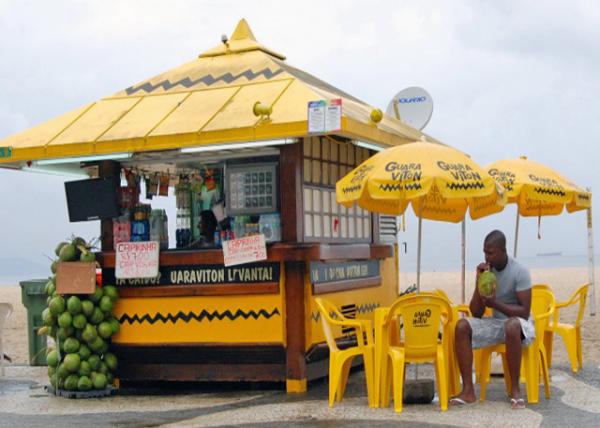 Vendor Pavillion (地摊亭子) Vendor Pavillion (地摊亭子)
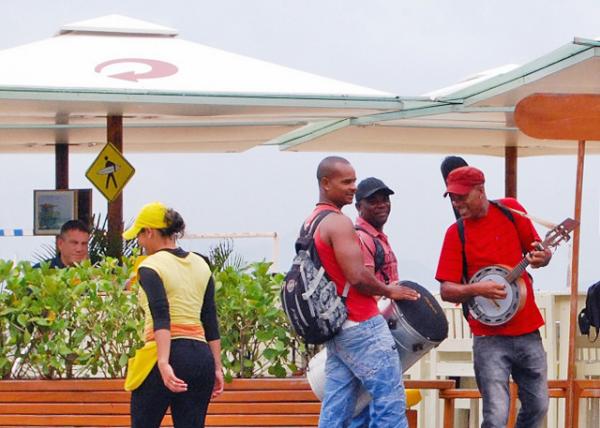 Street Performers (街头艺人) Street Performers (街头艺人)
 GIG-MIA @ Rio de Janeiro/Galeão International Airport GIG-MIA @ Rio de Janeiro/Galeão International Airport
(里约热内卢/大帆船国际机场·从里约飞往迈阿密 01-11-2013)  American Airlines from GIG to MIA w/ Direct Flight for 8.5 Hrs American Airlines from GIG to MIA w/ Direct Flight for 8.5 Hrs
(美国航空班机·从里约热内卢直飞迈阿密国际机场八个半小时 01-11-2013)
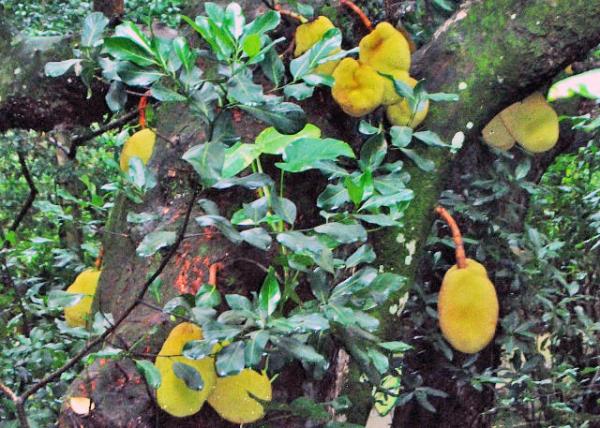
Jackfruits (菠萝蜜) Crosslinks(相关博文):
2013: Rio de Janeiro the Marvellous City, BRA(巴西里约—神奇之城) Brazil(出游巴西)
South America(漂流南美洲) 小学四年级(4th Grade) |
